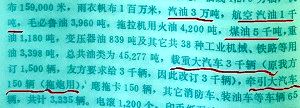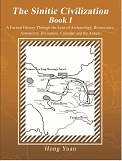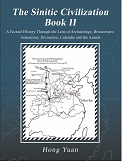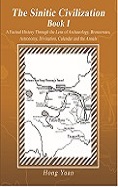
Sinitic Civilization-Book 1
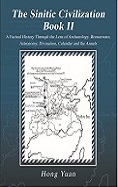
Sinitic Civilization-Book 2
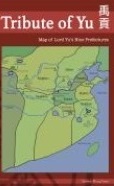
Tribute of Yu

Heavenly Questions
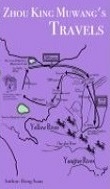
Zhou King Muwang's Travels
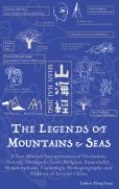
The Legends of Mountains & Seas
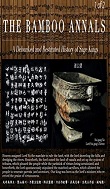
The Bamboo Annals - Book 1
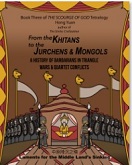
The Scourge-of-God-Tetralogy:
From the Khitans to the Jurchens & Mongols: A History of Barbarians in Triangle Wars and Quartet Conflicts
(available at iUniverse;
Google;
Amazon;
B&N)
|
|
THE MONGOLS - PART II
Second European Campaign (A.D. 1236-1242)
Back in A.D. 1229, Batu Khan ("Bathy rex Tartarorum") , son of Jochi and grandson of Genghis Khan, defeated most of the Bulghar posts.
In A.D. 1235, Ogodei decided to launch two-front wars, with elder sons Badu (Batu, i.e., Jochi's son), Baidaer (Baidar, i.e., Chahatai/Chagatai's son), Guiyou (Guyuk, i.e., Ogadei/Ogedei's son) and Mengge (Mengke/Moengke, i.e., Tuolei's son) leading the western campaign against Europe, and Ogodei's junior and third sons Kuoduan (Godan) and Kuochu attacking the Sichuan basin and Jingzhou-Xiangyang area, respectively.
The western campaign with 150,000 troops, alternatively called the elder son's campaign, was commanded by Batu and deputy Subetei.
The expedition, departing in the spring of 1236, arrived at the east riverbank of the Volga River by the autumn.
In the winter of A.D. 1236, Ogedei sent an army of 150,000 against Qin-cha and Russia, with Batu, Subetei, Moengke, et al., in charge.
Subetei fist swept north to attack Bulia'er (Bulgar) at the middle Yi-di-le (Bora, i.e., Volga) River while Mengke attacked Qin-cha (Kipchak).
(Luo Xianglin stated that the Mongols raised an army of 500,000.)
After finishing off the Volga Bulgars north of the Caspian, the Mongols went northward to attack the Rus tribes.
In the spring of A.D. 1237, Subetei turned to the steppe region around the Don River to reinforce Mengke's army.
The Mongols then went northward to attack the Rus tribes.
Subetei and Batu led an army of [exaggerated] 600,000 across the frozen Volga River and intruded into the Rus territories in the autumn of A.D. 1237.
In the winter, the Mongols under the command of Moengke attacked and sacked the Lie-ye-zan (Liang-zan, i.e., Riazan/Ryazan) city.
The chieftain Youli (Yuri?) and his son were recorded to have defended the city. Subetei captured Youli's son and intended to take over the wife of Youli's son for the beauty. When the woman jumped off the city wall to commit suicide, Subetei ordered the city to be slaughtered. Next, the Mongols attacked the city of Keluomuna and killed their leader by the name of Ruoman (Roman). The Rus relief army from Vladimir was defeated, too. The Mongols went to besiege the city of Moscow and captured the grandson of Youli the Second. The capital city was the Vladimir city (Moscow). Youli and his sons and nephews all died in fighting against the Mongols.
In February of A.D. 1238, the Mongols laid a siege of Vladimir.
Vladimir fell after five day's continuous siege.
Duke of Vladimir, by the name of Kuo-er-ji, fled west to the upperstream Volga River.
In A.D. 1238, the Mongols split into four routes to ravage the Rus territories.
By the summer of A.D. 1238, all northern Russian principalities, including Rostov, and Vladimir, were taken over by the Mongols. The Mongols went as north as the forests for sake of clearing the rear of Rus.
Only Novgorod escaped the Mongols, but Novgorod would have to pay tribute to the Mongols.
Subetei then turned south to the steppe region around the Don River.
The Mongols turned around to attack the Kipchaks and the Alans in the Caucasus area.
En route, the Mongols met with Russian resistance.
After a siege of dozens of days, the Mongols took over a city called Tu-li-si-ge (Kozelsk) by means of sending some disguised soldiers into the city.
Three days later, the spies opened the city gate and the Mongols sacked the city and slaughtered all.
The Mongols then continued southeast to attack Qin-cha (Kipchak), with multiple routes.
According to according to Rashid-al-Din Hamadani (1247-1318)'s Jami al-Tawarikh,
Shiban, Ba-chuo (Bujek/Buzheke/Habichi, i.e., Tolei's son) and Buri raided into the Crimean area and captured a chieftain by the name of Tatehela from among the Kipchaks;
and
Berke attacked the Kipchaks (Cumans) on the Kipchak steppe and captured chieftains A'erzhuheima, Hulanbasi and Hebalan.
Xin Yuan Shi put Berke's Kipchak campaign, which was directed against Hu-tan, i.e., Huotuosi-han, near Astrakhan (Xacitarxan), under the same timeframe as the spring A.D. 1238 siege of Kozelsk [that lasted forty-nine days] -- which could mean that some Mongol contingent already left Rus for the southeast.
The old chieftain (Huotuosihan or Khan Huotuoshi), hearing the arrival of the Mongols, fled to Ma-jia (i.e., Hungary).
Some accounts put the number of Kipchak or Cuman refugees somewhere near 200,000.
King Béla IV of Hungary offered the Cumans protection in return for their conversion to Christianity and providing 40,000 fighters in the defence against the Mongols.
Xin Yuan Shi separately recorded that
Shiban,
Buzheke (Bujek/Ba-chuo/Habichi, i.e., Tolui's son)
and Buri
in the autumn of A.D 1238 attacked Mielimu, a Kipchak subordinate clan, which was before the winter campaign against the rebellious Alans.
Buri was Chagatai's grandson and Baidar's nephew.
Shiban (Shayban) was a fifth son of Jochi and a younger brother of Batu, and later founded the Blue Horde, and
Berke, another younger brother of Batu, consolidated the Blue Horde and White Horde from A.D. 1257 to 1266.
Following the A.D. 1238 Kozelsk siege, Xin Yuan Shi, which appeared on surface to have omitted or shortened one year's events, continued to record the autumn campaign against the Circassians & Kipchaks and the winter campaign against the Alans.
Yuan Shi
and
Xin Yuan Shi were both wrong by one year in the biography sections on Ogodei Khan as far as the annalistic entries were concerned, which stated that Mengke, et al., laid a siege of the Allans' capital city Minkas or Magas (Miequesi, Maiquesi, Maigesi, or Metse-sy) from November A.D. 1239 to January A.D. 1240.
Xin Yuan Shi also conflicted itself in the biography sections on Mengke and Guyuk, in that the Mengke bio correctly claimed that the Mongols sacked the capital city Miequesi in the spring of A.D. 1239
and
the Guyuk bio merely claimed that Minkas was sacked by sixteen commandos after a siege of over three months in A.D. 1239.
After clearing the northwest of the Caucasus, the Mongols went to attack Southern Russia, i.e., Kiev.
With three prongs, the Mongols attacked Kiev along the winding area of the Dnieper River.
In November 1240, the Mongol left and right prongs, which had swept through the small towns around Kiev, crossed the Dnieper River to have the city surrounded from all directions.
At this time, the Kiev chieftain had gone north to help the dead Youli the Second. Hence, the Kiev chieftain became the head of the Rus capital Vladimir, while the Chernigov chieftain (Mihaile) had relocated to Kiev as the new head. (Kiev was the Rus capital for three hundred years before they moved to Vladimir. Also note that the name Rus came from Norse which was to say that the Rus conquerors had heritage from the Scandinavian pirates who crossed the Sea three hundreds before that time.)
On December 6th of A.D. 1240, the Mongols captured Kiev.
The Mongols attacked the Qiwa-cheng (Chernigov) city along the winding area of the Dnieper River. Chernigov chieftain (Mihaile or Mikhail ?) had defeated several waves of the Mongol attacks via pouring boiling water over the city wall. Then, Tadu decided to attack Kiev and personally led the siege. Chernigov chieftain (Mihaile) fled to today's Poland. One general by the name of Dimitri surrendered to the Mongols and then encouraged the Mongols to go west. Note the Mongols had conquered Russia during the infamous winter seasons which turned out to be the fatal enemy for both Napoleon and Hitler.
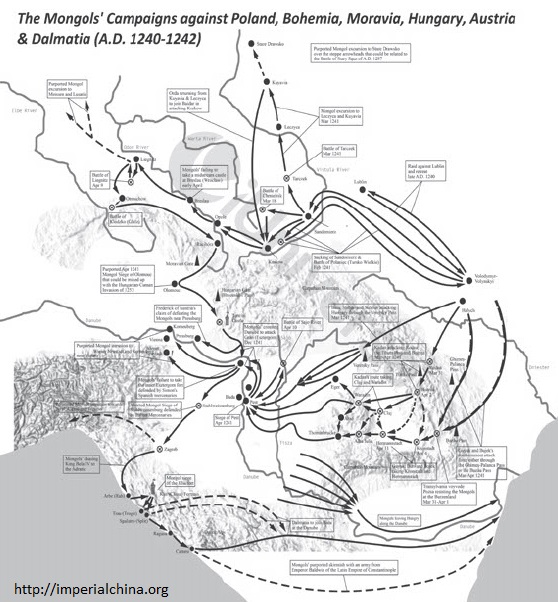
Mongol Campaign against the Jurchens (Battle of Yehuling, July of A.D. 1211)
Mongol Campaigns against Semiryechye & Central Asia (A.D. 1216-1219, 1219-1224)
Mongol Campaign against Kiev Rus (A.D. 1223)
Mongol Campaign against the Jurchens (A.D. 1231-1232)
Mongol Campaigns against the Volga Bulgars, Kipchaks, Alans, Rus Principalities, Crimea, Caucasus & Kiev Rus (A.D. 1237-1240)
Mongol Campaigns against Poland, Bohemia, Moravia, Hungary, Austria & Dalmatia (A.D. 1240-1242)
Mongol Campaign against Arsacia (Mulahida) from A.D. 1253 to A.D. 1256
Mongol Three-prong Campaign against Hezhou (Caaju) from late A.D. 1255 to early A.D. 1256
Mongol Continuous Campaigns in the Sichuan Basin (A.D.1257-1259)
Mongol Campaign against Hezhou (Caaju) & Diaoyucheng (A.D. 1257-1259)
Mongol Campaigns against the Abbasid Caliphate, Mecca, Misr (Egypt) Outposts, North Africa, and the Ayyubid & Mamluk Sultanates (A.D. 1257-1260)
|
|
In the spring of 1241, Tadu divided his Mongol army into 2 columns: Baidar & Kaidu to attack Poland with a force of 20000, and Subetei & Tadu to attack Majia (Hungary) with a force of 50000.
In December 1240, Batu, at Przemysl, sent an ultimatum to King Béla IV of Hungary demanding the surrender of the Cumans.
Bela immediately rallied his Hungarians as well as other European principalities for relief.
The Mongols then split into three hordes for continuing to raid west, i.e., west towards Poland, southwest towards the Carpathian Mountains, and south towards the Danube River.
Luo Xianglin stated that the Mongols, after Kiev, split into four routes for attacking Poland, Silesia, Galcia, and Hungary [Ma-jia], respectively.
Luo Xianglin probably meant for Kaidu (Khaidu)'s contingent, actually Orda's contingent, that swept through today's Lithuania as the fourth prong, or Subetei's parallel prong to Batu's main army that crossed the Carpathian Mountains.
The forerunner column to attack Poland would be led by Orda, i.e., Batu's elder brother.
http://historymedren.about.com/library/prm/bl2mongolinvasion.htm stated that "in February 1241, the Mongol army left its base in southern Russia and crossed the frozen rivers into central Europe. The force consisted of about 70,000 men, two-thirds of whom were light cavalry and the rest heavy cavalry, though all were equipped with bows. They were nominally commanded by Batu, but once again he was guided by Subotai."
Baidar and Orda attacked Poland in early March 1241 as a diversionary tactic. Batu and Subotai passed through the Carpathians into Hungary on March 12, while dispatching a small force commanded by Kadan [i.e., son of Ogadei] to the southern flank for entry into Transylvania.
Xin Yuan Shi stated that the Mongols defeated Polish voivode Vladimir at Po-lan-ni-ye (Bo-lan-ni-ye), i.e., Polaniec on the Czarna Hancza, before the Mongols launched a two-prong attack against Poland in the spring of A.D. 1241,
with a deep penetration into Kuyavia to the north.
What Polish General Vladimir fought against at Po-lan-ni-ye could be somewhere in the middle of Sandomir and Kraków.
Poland boasted of four tribes at that time under the Piastow family.
To the north, the Mongols swept through today's Lithuania and Poland. Lithuania was left largely intact and later the Lithuanians would become a strong power between the Baltic and the Black Sea.
In February, the Mongols sacked the city and fort of Sandomierz at the confluence of the Vistula and the San rivers.
Two Polish chieftains were either defeated or just fled in face of the Mongol attacks.
http://historymedren.about.com/library/prm/bl2mongolinvasion.htm stated that "sweeping in a northward arc past the edge of the Carpathians and into Poland, Kaidu and Baidar sacked Sandomir, defeated an army of Poles and other Slavic forces under Boleslav at Kraków on March 3, and defeated another Polish army at Chmielnik on March 18. Turning their attention back to Kraków, the Mongols seized and burned the city on March 24, then assaulted the Silesian capital of Breslau a few days later. Breslau held out..."
On March 24, at Cracow, Boleslav V (the Brave) of Poland, i.e., a cousin of Henry II, was killed. The remnants fled west to Liegnitz.
Kaidu detached a tumen to raid along the Baltic coast.
Kaidu detached a tumen to raid along the Baltic coast while he himself raided westward into Silesia.
The detachment possibly swept through today's Warsaw, which was a village at the time of the Mongol attacks.
Kaidu raided westward into Silesia.
Two Polish chieftains (dukes/kings) were either defeated or just fled in face of the Mongol attacks.
Boleslaw V fled into the Ka-er-ba-tuo (Carpathian) Mountains for Hungary,
and later, after the Mongols sacked Pest, fled to Moravia
before returning to Poland once the Mongols left Hungary and Poland.
[Mi]Xisilawu (Wladyslaw, i.e., Mieszko II the Fat or Duke of Opole-Racibórz) fled northwestward to Liegnitz (Legnica).
The third Polish chieftain, by the name of Heinrich (i.e., Grand Prince Henry II of Silesia or Henry the Pious) assembled an army of 30,000, comprising of 2 columns of Germans, 2 columns of Poles, and one column of Heinrich's own people. Exact terminologies would be "Polish knights, Teutonic Knights, and French Knights Templar", plus German gold miners from Goldberg.
Luo Xianglin stated that the 1st & 2nd route of the Mongol armies for the Polish Campaign then converged for an attack at Liegnitz.
Kaidu and Baidar, and in fact Orda and Baidar, intended to attack Henry II before King Wenceslas I of Bohemia [i.e., Henry II's brother-in-law] came to the relief with 50000 soldiers.
Henry II mis-calculated the arrival time of the Bohemian army and marched toward Jawor.
The Mongol army marched to Wahlstadt ["chosen place"] for Henry II to arrive.
On April 9, 1241, on the Walstattt Plains, near the city of Liegnitz (Legnica, Poland), the Polish-German joint armies, with the Teutonic knights included, fought against the Mongols.
http://historymedren.about.com/library/prm/bl2mongolinvasion.htm stated that "upon seeing the Tartars, Henry drew up his forces in four squadrons and placed one after the other on the Wahlstadt. The first group was made up of knights from various nations, supplemented by the miners from Goldberg under the command of Boleslav, son of the margrave of Moravia. Sulislav, the brother of the late palatine of Kraków, led the second group--Krakovians and knights from Welkopole. The third group consisted of knights from Opole, led by the Opolian Duke Meshko, and Teutonic Knights from Prussia under the Heermeister Poppo von Ostern. Duke Henry led the fourth group, which was made up of men at arms from Silesia and Breslau, knights from Welkopole and Silesia, and French Knights Templar."
The details of the battle could be fabricated by the later Europeans, with no involvement of Heermeister Poppo von Ostern and his Teutonic Knights involved at the Battle of Wahlstadt, and possibly very a very limited number of the French Knights Templar.
Using the trick of "false flight and ambush", the Mongols decimated the European joint armies: the light cavalry on the Mongol ponies against the hauberk-wrapped knights with lance and the broadsword.
Henry II was killed and his head was carried around on a spear at the head of the Mongol army until it rotted away.
http://historymedren.about.com/library/prm/bl2mongolinvasion.htm stated that "in accordance with a Mongol custom used to count the dead, an ear was cut from each dead European. The Tartars filled nine sacks with ears. Contemporary records show that 25,000 of Henry's men were killed."
Wenceslas and the Bohemians retreated upon hearing of Henry II's death.
Then, the Mongols then attacked Breslau and Mongols marched south through the Czechia territory to converge with Batu's Mongols who were attacking the Hungarians.
The Europeans could have made up a story that the Mongols met stiff resistance from the Bohemians at a place called Ao-le-mu and had to evacuate from today's Czechoslovakia.
The Mongols actually scurried through the Czechian territory for converging with Batu's Mongol army, with the two battles of Wahlstadt and Mohi only days apart.
Though, the Mongol northern contingent did not participate in the Battle of Mohi.
http://lcweb2.loc.gov/cgi-bin/query/r?frd/cstdy:@field(DOCID+mn0024) mentioned that Kadan (another son of Subetei), with 30,000, "advanced through Transylvania, into the Danube Valley, and into Hungary. They entered Moldavia, Bukovina and Transylvania through Tihuta/Birkau/Borgo Pass. In mid April, Kadan and Kaidu joined the main Mongol army under Batu in central Hungary."
En route, Kadan took over Hermannstadt in today's Romania.
Baidar fought across Moravia to meet with Subetei (Subotai) and Batu.
The three routes of the Mongol armies then converged on the Hungarian Plains.
The mountain pass Kadan traveled through was the Tihuta (Birkau/Borgo) Pass separated Bistri?a (Transylvania) from Vatra Dornei (Bukovina, Moldavia).
In Transylvania, Kadan selected six hundred Ri-er-man (Germanic) people as guides, i.e., fodder of war.
En route, the Mongols sacked and massacred the cities and forts of
Hua-la-ding (Varadin, Varasd, Varta, Varad, Varadinum, Groysvardeyn, Nagyvarad, Grosswardein), i.e., Oradea of Romania.
and
Sheng-ta-ma-si (? St. Thomas).
Alternative records stated that the cities sacked were Lu-dan (Rodna) and Wa-la-ding (Varadin).
Varadin's inner fort was sacked with artilleries (catapults) after the Mongols faked retreat to induce the defenders into coming out of the fort under the belief that the Mongos had retreated.
At Pi-le-ke (? Pereg), the Mongols first drove the captured Hungarians to the battle as fodder, followed by the Russians and Ku-qing people (likely some Central Asian people or Kipchak per Xin Yuan Shi), and the fort was sacked after seven days' siege that filled the moats with corpses.
Kadan's biography, that pinned the siege of Pi-le-ke (? Pereg) before the autumn harvest of A.D. 1241, invalidated Kadan's possible participation at the April 1241 Battle of Mohi.
The southernmost prong was under the command of Guyuk and Buri according to the Guyuk biography, plus likely Bujek.
Popular European records stated that Kadan, at the start of invasion, took over Hermannstadt in today's Romania.
According to Subetei's biography, Kadan's contingent was merely one of five prongs against Hungary.
The most logical candidate would be Guyuk and Buri who took over Kronstadt and Hermannstadt.
(As to Guyuk and Bujek's southernmost attack force which crossed the Siret River and Olt River consecutively to arrive at the Carpathian basin north of the Transylvania Alps,
a pitched battle with Pozsa, voivode of Transylvania, occurred on March 31st at the Burzenland.
The Mongols could have crossed the Carpathians at the Buzau Pass to the east of Brasov.
Should Guyuk start the campaign at the same starting point of Halych as Kadan, then the traversed mountain pass could be the Ghime?-Palanca Pass, instead.)
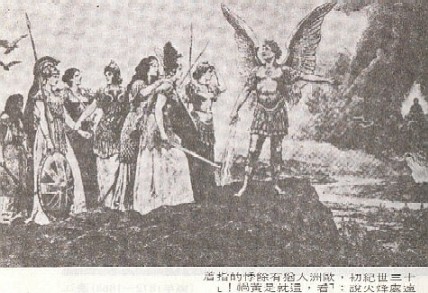 The three routes of the Mongol armies then converged on the Hungarian Plains.
In early April of 1241, Batu crossed the Carpathian Mountains into Hungary. Batu sent another note to Majia (Hungary), requesting for handover of the Kipchak chieftain (Huotuosihan). Batu had earlier sent Julianus (a Dominican friar) and the Cuman prisoners to King Bela IV, but the message was ignored. A Polish messenger's letter from Batu to Bela was also ignored.
Hungary, having received about 40,000 Kipchak [Cuman] people, ordered that they convert to Catholics.
Total troops assembled by the Hungarian king numbered at 100,000.
A Catholic priesthood leader, against the order of the Hungarian king, led a Christian army for a fight with the Mongols outside of the city, but he got defeated by the Mongols in a swamp. The Hungarians and Archduke Frederick of Austria blamed the Mongol attack on the Kipchak chieftain and killed Huotuosihan [Khotyan] for sake of pacifying the Mongols. The Kipchaks or Cumans left Hungary for Bulgaria, plundering all the way.
(http://historymedren.about.com/library/prm/bl2mongolinvasion.htm adopted an European account stating that in January 1241, Archduke Frederick of Austria, having arrived in Buda, was "ferried across the Danube River to the small merchant town of Pest when a riot broke out--some say at his instigation--in which the Cumans' khan, Khotyan, was killed and his head thrown into the street... Archduke Frederick returned to Austria to observe the coming war from the sidelines.)
The three routes of the Mongol armies then converged on the Hungarian Plains.
In early April of 1241, Batu crossed the Carpathian Mountains into Hungary. Batu sent another note to Majia (Hungary), requesting for handover of the Kipchak chieftain (Huotuosihan). Batu had earlier sent Julianus (a Dominican friar) and the Cuman prisoners to King Bela IV, but the message was ignored. A Polish messenger's letter from Batu to Bela was also ignored.
Hungary, having received about 40,000 Kipchak [Cuman] people, ordered that they convert to Catholics.
Total troops assembled by the Hungarian king numbered at 100,000.
A Catholic priesthood leader, against the order of the Hungarian king, led a Christian army for a fight with the Mongols outside of the city, but he got defeated by the Mongols in a swamp. The Hungarians and Archduke Frederick of Austria blamed the Mongol attack on the Kipchak chieftain and killed Huotuosihan [Khotyan] for sake of pacifying the Mongols. The Kipchaks or Cumans left Hungary for Bulgaria, plundering all the way.
(http://historymedren.about.com/library/prm/bl2mongolinvasion.htm adopted an European account stating that in January 1241, Archduke Frederick of Austria, having arrived in Buda, was "ferried across the Danube River to the small merchant town of Pest when a riot broke out--some say at his instigation--in which the Cumans' khan, Khotyan, was killed and his head thrown into the street... Archduke Frederick returned to Austria to observe the coming war from the sidelines.)
Cai Dongfan stated that the Mongols refused to leave even though the Cuman khan was dead. The Hungarian King (Beila, i.e., King Bela IV of Hungary) led a surprise attack at Batu and chased Batu's army outside of the city. At this time, Subetei came to the aid of Batu.
The Mongols lured King Bela into a battle at the city of Mohi, on the banks of the Sajo River, on April 11. This is two days after the battle of Liegnitz.
The Hungarian king's brother, i.e., Duke Slavonija, fled to the city of Pest, where failed to persuade the residents to flee according to the annals, and later fled to territories of Croatia and Dalmatia, where he died of wounds.
King Bela fled west into the Austrian territories.
It was claimed in the annals that the Hungarian king, who first fled to a forest, then escaped to Tu-si-la (Bratislava), where he converged with his son-in-law Bolesilafu'ai, i.e., Boleslaw V the Chaste who actually fled to Hungary beforehand and then fled to Moravia after the Mongols sacked Pest.
What happened was that the Hungarian king first fled north, and subsequently to Bratislava (Pozsony/Pressburg) in today's Slovakia, before going west into Austria.
In April 1241, the Mongols took over the city. (Some Mongol expert at http://www.coldsiberia.org detailed that Hungarian armies, "about 80,000 died in one battle and another 100,000 in consequent battles for Pest at the Sajo river, where Batu feigned a crossing during the evening of April 10, while Subedei crossed the river elsewhere covered by the dark of night." )
Meanwhile, Kadan took over Hermannstadt. Baidar and Kaidu fought across Moravia to meet with Subetei (Subotai) and Batu.
Throughout the Hungarian Plains, the Mongols ravaged the land from April to early next year other than a few mountain forts.
The Mongols spent the rest of the year consolidating their control of Hungary east of the Danube River.
Late in 1241, the Mongols crossed the frozen Danube to the south and west. Scouting columns raided into northern Italy, towards Venice and Treviso, and up the Danube toward Vienna. The Mongols chased Bela into Aosi (Austria) and Niemisi (Germany), pillaging and killing all the way to the Adriatic in Dalmatia. The Mongol reconnaissance was seen near the city of Vienna. (Some Mongol expert at http://www.coldsiberia.org mentioned that "during the whole campaign, the European countries were incapable of resolving their differences to fight a common enemy. Austria seized parts of Hungary and the pope was rumored to be trying to induce the Mongols to attack his rivals and enemies").
In Dec, 1241, Batu's Mongol army crossed the Danube River to the west in the winter [which was A.D. 1241] and took over the Ge-lan (Gran, Esztergom).
The Hungarians broke the frozen ice to prevent the Mongols from crossing the river.
The Mongols drove the cattle onto the ice to test the strength of ice.
The Hungarians, stepping on the ice, retrieved the cattle.
The Mongols then sent ten thousand cavalrymen across the river.
After crossing the Danube, the Mongols mounted thirty artilleries (catapults) against the Gran city, filled up the moats, and sacked and massacred the city on the Christmas Day.
Kadan's biography claimed that
the defenders, a group of people called Si-ba-ni-ya (Spanish), retreated into the church under the command of Xi-men-ri (Simon) to continue confrontation against the Mongols.
Batu, stay on at the Gran city to continue the siege, sent lieutenants to expanding the war to the west and south.
The Mongols split into two routes for attacking Vienna to the west and chasing Bela VI to the south.
According to the citation of a Benedictine Abbot letter by Tomas Somer of Palacky University Olomouc, the Mongols could for a second time have entered Moravia in the campaign against Vienna, namely, the southern Maravian land that bordered with eastern Hungary and western Austria.
The Mongols chased Bela into Ao-si (Austria) and Nie-mi-si (Niemtsy, i.e., Germany), pillaging and killing all the way to the Adriatic in Dalmatia.
Purportedly, the Mongols'
scouting columns raided into northern Italy, towards Venice and Treviso, and up the Danube toward Vienna.
Purportedly, at Nuo-yi-shi-da (Wiener Neustadt), south of Vienna, the Mongols were repelled by the allied Austrian-Bohemian army under the command of Duke Frederick.
On December 11, 1241, Ogedei Khan died in Mongolia. The regency was taken over by his widow Toregene (Empress Naimazhen-shi, reign 1241-1246). In February 1242, the news of Ogedei's death came to Batu's camp. Batu led his armies back to the east. The Mongols moved through Dalmatia and Serbia, then eastward and they destroyed the kingdoms of Serbia and Bulgaria before crossing the lower Danube. The Mongols evacuated Hungary and moved into the south Russian steppe. Batu established his capital at Sarai, near the Caspian and Volga, and his statelet would be known as the Khanate of Kipchak or the Golden Horde which would rule Russia for 250 years, till A.D. 1480. Guyuk was elected Grand Khan in A.D. 1246.
 The Scourges-of-God Tetralogy
would be divided into four volumes covering
Hsiung-nu (Huns), Hsien-pi (Xianbei), Tavghach
(Tuoba), Juan-juan (Ruruans), Avars, Tu-chueh (Turks), Uygurs (Huihe), Khitans, Kirghiz, Tibetans, Tanguts, Jurchens, Mongols and Manchus and
southern barbarians.
Book I of the tetralogy would extract the contents on the Huns from
The Sinitic Civilization-Book II,
which rectified the Han dynasty founder-emperor's war with the Huns on mount Baideng-shan to A.D. 201 in observance of the Qin-Han dynasties' Zhuanxu-li calendar.
Book II of the Tetralogy would cover the Turks and Uygurs.
And
Book IV would be about the Manchu conquest of China.
The Scourges-of-God Tetralogy
would be divided into four volumes covering
Hsiung-nu (Huns), Hsien-pi (Xianbei), Tavghach
(Tuoba), Juan-juan (Ruruans), Avars, Tu-chueh (Turks), Uygurs (Huihe), Khitans, Kirghiz, Tibetans, Tanguts, Jurchens, Mongols and Manchus and
southern barbarians.
Book I of the tetralogy would extract the contents on the Huns from
The Sinitic Civilization-Book II,
which rectified the Han dynasty founder-emperor's war with the Huns on mount Baideng-shan to A.D. 201 in observance of the Qin-Han dynasties' Zhuanxu-li calendar.
Book II of the Tetralogy would cover the Turks and Uygurs.
And
Book IV would be about the Manchu conquest of China.
From the Khitans to the Jurchens & Mongols: A History of Barbarians in Triangle Wars and Quartet Conflicts
, i.e., Book III of
the Scourge-of-God-Tetralogy,
focused on the Khitans, Jurchens and Mongols, as well as provided the annalistic history on the Sui and Tang dynasties, the
Five Dynasties & Ten Kingdoms, and the two Soong dynasties.
Similar to this webmaster' trailblazing work in rectifying the Han dynasty founder-emperor's war with the Huns to 201 B.C. in The Sinitic Civilization - Book II,
this Book III of the Scourge-of-God-Tetralogy
collated
the missing one-year history of the Mongols' Central Asia campaigns and restituted the
unheard-of Mongol campaign in North Africa.
|
The Scourges of God: A Debunked History of the Barbarians" - available at iUniverse|Google|Amazon|B&N
From the Khitans to the Jurchens & Mongols: A History of Barbarians in Triangle Wars and Quartet Conflicts
(The Barbarians' Tetralogy - Book III)
Epigraph,
Preface,
Introduction,
Table of Contents,
Afterword,
Bibliography,
References,
Index
|
|
Table of Contents
(From the Khitans to the Jurchens & Mongols: A History of Barbarians in Triangle Wars and Quartet Conflicts)
Chapter XX: The Mongols ...................................................................................363
Origin of the Mongols: Mengwu Shiwei .................................................................365
The Mongol Legends ............................................................................................370
Genghis Khan's Mongols Called Themselves by the Da-da ('Ta-ta-er') .................375
Meng2gu3 State and/or Mongols' Conflicts & Feuds with the Jurchens ..................378
The Mongols' Kinsmanship with the Khitans and Jurchens ......................................381
Chapter XXI: The Turco-Mongol Tribes & Clans ...................................................383
The Tayichi'ut ........................................................................................................383
The Jurkin .............................................................................................................385
The Oirats ............................................................................................................386
The Onggirat & Genghis Khan's Wife ....................................................................387
The Jadirats and Genghis Khan's blood-brother Jamuka ........................................387
The Tatars (Ta-ta-er, not today's misnomer Tartars) ...............................................391
The Naimans (Turco-Mongol) ...............................................................................392
The Keraits (Turkic) ............................................................................................. 394
The Merkits & the Women Abduction ....................................................................396
The Jalair................................................................................................................398
The Wang'gu (Vuanggu, Wanggu, Ongud, Ongut) ...................................................399
The Kirghiz ............................................................................................................399
Genghis Khan's Family Members of Six Brothers & Four Sons, Four Steeds &
Four Dogs .................................401
Chapter XXII: The Mongol Attacks on the Tatars, Naimans, Keraits, Tanguts,
Jurchens, Khitans in Manchuria & Kara-Khitay (from A.D. 1202
to 1219) .......................403
Attack on the Tanguts .............................................................................................405
The Mongol Attack on the Jurchens ........................................................................407
The Battles of Huan'erzui (badger mouth) & Yehuling (wild fox ridge) ......................409
The Battle of Migukou (secret valley entrance) .........................................................413
The Mongol's Second Campaign against the Jurchens (A.D. 1213) ..........................414
Attack on the Kara-Khitay (A.D. 1214) ...................................................................415
The Mongols' Sacking the Jurchen Capital City of Zhongdu ......................................416
Attack on the Khitans in Manchuria ...........................................................................417
The Quartet Wars among the Mongols, Jurchens, Tanguts and Southern Soong ...........418
The Mongol Attacks on the Keraits & Kara-Khitay ...................................................420
Southern Soong's Recovering the Shan-dong & He-bei Territories .............................421
Continuous Mongol Attacks on the Tanguts ............................................................. 421
The Mongol Attack on the Khitans along the Manchuria-Koryo Border ....................422
Chapter XXIII: The Mongol Campaigns Against Semiryechye & Central Asia
(A.D. 1216-1224) .................423
The Mongol Campaign against Kuchlug's Kara-Khitay (A.D. 1218) .......................425
The Fergana Valley Campaign, and the Battles of Oyrat, Bukhara, Samarkand
(A.D. 1219-1220) ................426
Subetei & Chepe Chasing the Khwarazm Shah to Balkh, Neyshabur, Urgenchi,
A-la-hei (Alajeh, Amol) , Demavend Mountain, Qazvin, and the Caspian Sea
(A.D. 1220) ........................431
Jala ad-Din's Succession as the Khwarazm Sultan (Shah) ........................................433
The Amu Darya River Sweep Campaign (A.D. 1220-spring 1221) ......................... 433
Siege of the Urgenchi Twin Cities (autumn of A.D. 1221-spring of A.D. 1222) ..........435
Battle of the Buzgala Pass (April of A.D. 1221) .......................................................437
Tolui's Khorasan, Mazandaran and Arsacia Campaigns (autumn of A.D.
1221-spring of 1222) ..................................................439
Battle of the Taloqan Castle (autumn 1221-March of A.D. 1222) .............................440
The Battles of Bamiyan and Beruwan (summer of 1222) .......................................... 441
The India Campaign (A.D. 1222-1224) ....................................................................444
Subetei and Chepe's Campaign in the Caucasus (A.D. 1220-1222) ..........................447
The First European Campaign (A.D. 1222-1223) .....................................................448
The Mongols' Continuous Campaigns against Iraq-i Ajam and Transcaucasia
(A.D. 1230-1240) .....................................450
Chapter XXIV: Demise of the Tangut Xia Dynasty (A.D. 1038-1227) .........................453
Chapter XXV: Demise of the Jurchen Jin Dynasty (A.D. 1115-1234) ...........................458
Chapter XXVI: OGEDEI KHAN (r. A.D. 1229-1241) ...............................................477
Chapter XXVII: The Second European Campaign (A.D. 1236-1242) ..........................483
The Mongol Attack on the Bulgars, Kipchaks and Alans (A.D. 1236-1237,
1238-1239, 1242) ....................483
The Mongol Attack on the Northern Rus Principalities (A.D. 1237-1238, 1239) ............484
The Mongol Attack on the Kipchaks, Alans, Crimea & Caucasus (A.D. 1238-1240) .... 487
The Mongol Attack on the Kiev Rus Principality (A.D. 1240) ........................................489
The Mongol Attack on Poland, Bohemia, Moravia, Hungary, Austria & Dalmatia
(A.D. 1240-1242) ...........................491
Chapter XXVIII: DOWAGER-EMPRESS TOREGENE (r. A.D. 1241-1246),
GUYUK KHAN (r. A.D. 1246-1248), & OGHULGAMISH'S
REGENCY (r. A.D. 1249-1251) ................ 506
Chapter XXIX: Mengke Khan (r. A.D. 1251-1259) ......................................................509
Chapter XXX: The Mongol Conquest of the Mywa (Dali) State ....................................513
Chapter XXXI: The Mongols' Third Western Campaign in the Middle East &
North Africa (A.D. 1252-1260) ........................519
Chapter XXXII: Mengke Khan's Death in the Siege of the Hook-Line Fishing Castle .....524
Chapter XXXIV: Southern Soong vs. the Mongols ........................................................571
The Duanping Northern Expedition against the Mongols (A.D. 1234) .............................571
Ogedei Khan's Campaign against Southern Soong .........................................................572
Cao Youwen Defeating the Mongols at Qingyeyuan and Defending the
Yangpingguan-Jiguan'ai Passes (A.D. 1236)...................... 577
The Mongols Ravaging the Sichuan Basin from A.D. 1236 to 1279 .................................582
The Mongols' War against Southern Soong during Toregene, Guyuk &
Oghul-qaimish's Reigns ..........................585
The Mongols' Recurring Attacks against the Sichuan Mountain Forts &
the Han-shui River Bend Forts through the A.D. 1250s ...................589
The Third Mongol Campaign against Hezhou (Caaju) & Diaoyucheng
(A.D. 1257-1259) ............................596
Chapter XXXV: Khubilai's War Against Southern Soong ..................................................603
Khubilai Khan's Sinicization & Southern Soong's Northern Expedition to Echo Li
Tan3's Rebellion .......................608
Khubilai Khan Launching the Yuan Dynasty (A.D. 1271) ....................................................612
The Mongols' Continuous Campaigns in the Sichuan Basin for Two Decades .......................613
Soong Emperor Duzong (Zhao Qi, r. A.D. 1264-July 1274) ................................................616
The Mongol Siege of Xiangyang & Fancheng Twin Cities (A.D. 1267-1273) .......................617
The Mongols' Campaign against the Triangular Vertices of Ying3zhou, Jiangling
and Yueyang (A.D. 1274-1275) ........................623
Soong Emperor Gongdi (Zhao Xian, r. A.D. 1275-1276) ....................................................626
Soong Dowager-Empress Surrendered the Capital City Lin'an to the Mongols
(February of A.D. 1276) ..................631
Continuous Resistance in the Sichuan Basin and Southwestern China ....................................635
Soong Emperor Duanzong (Zhao Shi, r. A.D. 1276-1278) & Emperor Shaodi
(Zhao Bing, r. A.D. 1278-1279) ...........640
Demise of the Southern Soong Dynasty (A.D. 1127-1279) ...................................................644
The Mongols' Weapon Prohibition Order against the Chinese ................................................648
Chapter XXXVI: The Death Toll from the Mongol Conquest .................................................650
Section Seven: The Yuan Dynasty (A.D. 1271-1368)
Chapter XXXVII: Khubilai Khan (r. A.D. 1260-1294) ......................................................... 657
Khubilai Defeating Contender-khan Arik-Buka at Karakorum ................................................659
Khubilai Launching the Sinicized Yuan Dynasty (A.D. 1271-1368) .........................................660
The Conquest of Southern Soong ..........................................................................................666
Chapter XXXVIII: The Mongol Invasion of Koryo, Japan, Vietnam, South &
Southeast Asia & Island States .................669
The Invasion of Koryo & Japan ............................................................................................669
The Invasion of Burma, Champa & Annam ............................................................................675
The Invasion of Java, Declaring Amnesty, and Khubilai's Death ..............................................686
Chapter XXXIX: The Mongol Internal Strife ..........................................................................687
Chapter XL: The Yuan Dynasty Emperors ..............................................................................692
Emperor Chengzong (Borjigin Temur, r. A.D. 1294-1307) ......................................................692
Emperor Wuzong (Borjigin Qayisang, r. A.D. 1307-1311) ......................................................693
Emperor Renzong (Borjigin Ayuur-balbad, r. A.D. 1311-1320) ...............................................693
Emperor Yingzong (Borjigin Sidibala, r. A.D. 1320-1323) .......................................................695
Emperor Taidingdi (Borjigin Yisun-temur, r. A.D. 1323-1328) .................................................696
Emperor Tianshundi (Borjigin Razibay, r. A.D. 1328) .............................................................. 696
Emperor Wenzong (Borjigin Tob-temur, r. A.D. 1328-1329, 1329-1332) ...............................697
Emperor Mingzong (Borjigin Kusele/Kusala, r. A.D. 1329) .....................................................697
Emperor Ningzong (Borjigin Rincinbal, r. A.D. 1332) ..............................................................698
Emperor Shundi (Borjigin Toyan-temur/Toghan-temur, r. A.D. 1333-1370) ..............................698
Chapter XLI: The Red Turbans' Rebellion Against the Mongols ...............................................701
Chapter XLII: The Ming Dynasty vs. the Mongols ..................................................................720
|
|
Toregene, Guyuk
Ogedei built several palaces in different places and indulged himself in sex with his 6 empresses and over 100 concubines. (Ogedei Khan was responsible for establishing a postal relay system, and Luo Xianglin claimed that the Southern Soong Chinese had commerce with the Mongols from the Lianshui-jun Garrison in the Yangtze-Huai river areas to Karakorum via today's coastal Shandong Province.) Against the advice of Yelü Chucai (Yeh-lu Chu'tsai), Ogedei went hunting and died in some ranch. When Ogedei died, Guyuk was still campaigning in the west. Hence, the sixth empress, Toregene (Naimazhen-shi), decided to take over the regency with the support of a Muslim minister called Aodulaheman. Aodulaheman was appointed the post as a prime minister, and he colluded with a Muslim woman called Fatima in controlling the Mongol court. Yelü Chucai hence resigned his post for retirement. When Genghis Khan's only remaining brother led a force towards the capital, Toregene would recall Yelü Chucai for mediation. Yelü Chucai died in A.D. 1243. At this time, Guyuk returned from the west. Aodulaheman and Fatima, for sake of continuing their control of the court, proposed to Toregene that Batu should come back for an assembly before Guyuk could be enthroned. After four years (1242-1246), Batu still refused to come east though the Mongol soldiers had returned home. In A.D. 1246, Subedei died at the age of 70. When Toregene got ill, Guyuk was enthroned as the Khan. A Franciscan friar, John of Plano Carpini, as a papal envoy, witnessed the event. After the death of his mother, Guyuk killed Aodulaheman and threw Fatima and her female entourage into the river. While touring the west in A.D. 1248, Guyuk got ill and passed away. Guyuk's widow, Oghulgamish, holding their son, took over the regency without disclosing the death of Guyuk. Oghulgamish did consult with Touli's dowager concubine. Guyuk was titled Emperor Dingzong posthumously.
* In Commemoration of China's Fall under the Alien Conquests in A.D. 1279,
A.D. 1644 & A.D. 1949 *
 U.S.S.R./Comintern Alliance with the KMT & CCP (1923-1927)
U.S.S.R./Comintern Alliance with the KMT & CCP (1923-1927)
 Korean/Chinese Communists & the 1931 Japanese Invasion of Manchuria Korean/Chinese Communists & the 1931 Japanese Invasion of Manchuria
American Involvement in China: Soviet Operation Snow, IPR Conspiracy, Dixie Mission, Stilwell
Incident, O.S.S. Scheme, Coalition Government Crap, Amerasia Case & The China White Paper
* Stay tuned for "Republican China 1911-1955: A Complete Untold History" *
|
|
Zou Rong's Revolutionary Army;
Shin Kyu Sik's
Shrine (Spirit, Kunitama) of Korea
|
This snippet is for sons and daughters of China:
Heed the sons & ministers' agony and sorrow of our ancestors who died or lived through the Mongol, Manchu and Soviet-Chicom conquest
and
the Yongjia, Jingkang and Jiashen cataclysms !
Jeanne d'Arc of China:
Teenager girl Xun Guan breaking out of the Wancheng city to borrow the relief troops in the late Western Jinn dynasty;
Liu-Shao-shi riding into the barbarian army to rescue her husband in the late Western Jinn dynasty;
teenager girl Shen Yunying breaking into Zhang Xianzhong's rebels on the horseback to avenge on father's death in the late Ming dynasty.
China's Solitary and Lone Heroes:
Nan Jiyun breaking out of the Suiyang siege and charging back into the city in the Tang dynasty;
Zhang Gui & Zhang Shun Brothers breaking through the Mongol siege of Xiangyang in the Southern Soong dynasty;
Liu Tiejun breaking through three communist field armies' siege of Kaifeng in the Republican China time period;
Zhang Jian's lone confrontation against the communist army during the June 3rd & 4th Massacre of 1989.
|
|
|
Touli's dowager concubine had earlier warned Tadu of Guyuk's western tour. Tadu was on his way to the east to see Guyuk when he received the news that Oghulgamish had taken over the regency. In the west, Batu held an assembly by himself, attended by descendants of Jochi and Touli. Descendants of Chagadai and Ogedei refused to attend. At the assembly, Khubilai and Muoge, sons of Touli, refused to acknowledge Guyuk's son as the heir. Subetei's son proposed that Batu be the khan. Batu recommended Mengke as the candidate. Oghulgamish's representative then went east to notify Oghulgamish of the assembly's decision. Oghulgamish was unhappy and said the assembly should be held in the east, not west. Batu then ordered that a brother accompany Mengke to the east. Another assembly (khuriltai) was held, but descendants of Chagadai, Ogedei and Guyuk refused to attend. In A.D. 1251, Batu's people, i.e., the Jochi family which allied with the Touli family, hence forcefully declared Mengke as the new Khan. Touli was titled Emperor Ruizong posthumously. Mengke would frustrate an attempt by the assassins sent by Guyuk's son, and further, Mengke either killed or exiled the descendants and dowager empresses of both Ogedei (Taizong) and Guyuk (Dingzong), making the Touli family feuds of the Ogedei family.
Two brothers, Khubilai and Hulegu, would play active roles now.
Mengke sent younger brother Hulegu and few tens of thousands of cavalry against today's Arab peninsula and North Africa, while sending Khubilai against Dali in today's southwestern China.
Khubilai was responsible for managing the region south of the Gobi Desert. Khubilai would use two Chinese intellectuals, Yao Shu and Xu Heng, and a Huihe'r (Uygur?) man called Lian Xixian. Khubilai recommended another Chinese, Liu Bingzhong, to Mengke for the construction of the Kaiping city later.
Mengke deprived the Ogedei descendants of some of their former domains, making him and Khubilai inherit the lands of East Asia. A limit was put on the domains of the successors of Chagadai, which was to end along the Oxus River and the Hindu Kush. Hulegu, later Ilkhans ("subservient khans") of Iran, would rule beyond the Chagadai domain. Meanwhile, Batu had conducted some limited raids into today's Poland, Lithuania, Estonia, Serbia and Bulgaria.
In 1252 and 1253, Khubilai ordered Wulianghetai, i.e., Subetei's son, to attack Dali (i.e., Nanzhao) in today's southern Chinese province of Yunnan, with three columns. Dali King, Duan Zixing, fled to Kunming. Under Wulianghetai's siege, Duan Zhixing surrendered in 1254. Then, the Mongol army invaded the Shanshan statelet in the Chinese Turkistan and entered the Tibetan Plateau thereafter. A Tibetan lama led the Mongols into the capital. The Tibetan chieftain surrendered. Khubilai entered Tibet and met the lama. When Mengke recalled Khubilai, Khubilai would take the 15 year old son (Phagsba) of the lama back to northern China and made him the Imperial Tutor when Khubilai got enthroned later. Subetei's son was ordered to march to the southwest and he conquered various southwestern statelets and tribes such as Baiman, Wuman, Guiman, Luoluosi, A'bo and A'lu etc. Tonkin or Annam (northern Vietnam) was invaded.
In southwestern China, the Yang family of Bozhou, which sent troops to aiding the Soong army in the Sichuan basin throughout the 1230s and 1240s, built a chained mountain defense works that came to be known as the Great Wall of southwestern China.
The Mongols, fearing the Yang family's bravery, skipped the Bozhou territory in the raids against southwestern China.
The Yang family sent in a contingent to helping defend the Diaoyucheng fort at Hezhou (Chungking) in A.D. 1258 when the news came that Mengke Khan personally led the campaign against the Sichuan basin.
Mengke Khan was to be blasted to death under the foot of Diaoyucheng in A.D. 1259 after half a year's futile siege.
In A.D. 1255, Batu died.
In 1257, the Vietnamese king, by the name of Chen, fled to an island and Hanoi was sacked. The Vietnamese king surrendered and the Mongols left after a stay of nine days.
Mengke, Hulegu & Mongol Third Wave To The West
Hulegu [Fu-la] was ordered to go to the west to quell the Muslim rebellion in the early 1250s A.D.
In A.D. 1252, Guo Kan, who was responsible for sacking De'an (Anlu, Hubei) in A.D. 1235, brought the weapons to Mongolia and then was ordered to follow Hulegu (Xu-lie-wu) on a western campaign.
In July of A.D. 1253, Mongol General Que-di-bu-hua (Kitbuqa Noyan), a Christian Naiman, led a 12,000-men herald army for attacking today's eastern and northern Iran, namely, the Khorasan and Masandelan (Mazandaran) mountain area.
Guo Kan, leading the ethnic-Chinese artillery troops, likely joined the battles in A.D. 1253.
In October of A.D. 1254, Hulegu, with 100,000 troops, departed Mongolia for the Middle East.
Hulegu marched along the northern side of the Tianshan Mountains, passing Alimali (present-day Korgas), and reached the bank of River Amu-darya in A.D. 1256. Then, he invaded a country called Munaixi (Hashasheen or Assassin or Arsacia) to the south of the Caspian with three columns.
In the spring of A.D. 1256, the Mongol main army under Ku-ta-yi-er-ge attacked the Khorasan mountain area as reinforcement for Que-di-bu-hua's Mongol army that attacked Neyshabur and Ferdows.
Meanwhile, Hulegu called on the Mongol auxiliary army in the Caucasus area to pincer-attack Munaixi, i.e., Hashashin (Hashasheen or Assassin or Arsacia), from the northwest.
The chieftain of Munaixi tried to negotiate for peace. Hulegu said the Muslims must destroy all their city and castles before they could talk for peace. Under the siege, the Munaixi chieftain surrendered to the Mongols and destroyed their city and surrounding fifty castles.
Under the siege, Rukn ad-Din Kurshah surrendered to the Mongols in November of A.D. 1256 at Maimendisi-bu (Meimundiz) and destroyed their city and surrounding fifty castles.
But the Mongols ordered the city slaughtered.
The Mongols then ordered the capital city Alamut slaughtered when it surrendered in December.
Later the Mongols still killed imam Rukn ad-Din Kurshah.
The remnant Persians/Arabs fled to today's Baghdad from Arsacia.
Guo Kan, a Chinese general who served the Mongols since the times of his grandfather, was responsible for fighting the "assassin" Muslim sect.
Yuan Shi pointed out that the Munaixi people cut apart the roads and put poisons in the water; however, Guo Kan was able to sack 128 cities and killed the Arsacia king by the name of Suantan (king) Hu-du-da-er-wu-zhu.
Guo Kan's biography in Yuan Shi put the start of battles in the 'gui chou' year, i.e., A.D. 1253, followed by the sacking of the Tan-han-shan mountain fort of the Qi-du-bu state, the surrender of King Zhu-lu-zhu-nai, and the killing of the king's father in A.D. 1256;
the surrender of King Hai-ya at Zhu-li-er in A.D. 1257;
the surrender of King Ma-za-da-er at A-la-ting; and
the surrender of King Hu-li at Qi-shi-mi-bu.
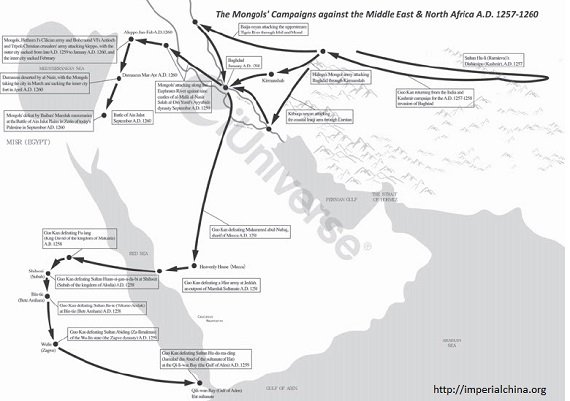
Mongol Campaign against the Jurchens (Battle of Yehuling, July of A.D. 1211)
Mongol Campaigns against Semiryechye & Central Asia (A.D. 1216-1219, 1219-1224)
Mongol Campaign against Kiev Rus (A.D. 1223)
Mongol Campaign against the Jurchens (A.D. 1231-1232)
Mongol Campaigns against the Volga Bulgars, Kipchaks, Alans, Rus Principalities, Crimea, Caucasus & Kiev Rus (A.D. 1237-1240)
Mongol Campaigns against Poland, Bohemia, Moravia, Hungary, Austria & Dalmatia (A.D. 1240-1242)
Mongol Campaign against Arsacia (Mulahida) from A.D. 1253 to A.D. 1256
Mongol Three-prong Campaign against Hezhou (Caaju) from late A.D. 1255 to early A.D. 1256
Mongol Continuous Campaigns in the Sichuan Basin (A.D.1257-1259)
Mongol Campaign against Hezhou (Caaju) & Diaoyucheng (A.D. 1257-1259)
Mongol Campaigns against the Abbasid Caliphate, Mecca, Misr (Egypt) Outposts, North Africa, and the Ayyubid & Mamluk Sultanates (A.D. 1257-1260)
|
|
In September of A.D. 1257, Hulegu, taking the Mongol army and the Caucasus auxiliary army, attacked today's Iraq, i.e., the Bao-da (Baghdad) state, with three prongs.
In A.D. 1258, Hulegu reprimanded the Abbasid Caliphate, Mu-si-ta-xin, for offering asylum to the Munaixi people.
The Mongols' right prong under the command of Bai-zhu (Baiju-noyan) attacked the upperstream Tigris River through Irbil and Mosul.
The Mongols defeated the Caliphate army by flooding the Arabic camp.
The Mongols' left prong under the command of Que-di-bu-hua (Kitbuqa Noyan), through Lurstan, attacked the coastal Iraqi area, where the Tigris River and the Euphrates River had their confluence into the Persian Gulf.
Then, they went on to lay a siege of the city of Baghdad and bombarded the city from all directions. Hulegu refused to see Mustaxin's elder son for surrender talk.
Yuan Shi claimed that the caliphate had a territory of 8000-li distance, a history of 42 generations, and hundreds of thousands of troops.
Guo Kan first defeated 70,000 troops at the west city and slaughtered it, and then sacked the east city and burnt the sandalwood palaces, with the fragrance spreading 100-li distance. The lootings included 72-chord pipa(s) and 5-feet coral lantern(s).
Mustaxin surrendered in February of A.D. 1258. Alternative saying is that Guo Kan captured the caliphate when the caliph fled on a boat on the Tigris River.
Before attacking the two cities, Guo Kan laid bridge-like stumps in the river separating the two cities.
When Suan-tan (King) Ha-li-fa (Caliph) saw the river blocked, he surrendered.
Guo Kan chased a caliphate general by the name of Zhou-da-er for dozens of li distance and the next day caught and killed him.
Hulegu ordered the city to be slaughtered, except for the Catholics and foreigners. For seven days, about 800,000 people were slaughtered. Mustaxin's harem of 700 women were either killed or taken over by the Mongols. Hulegu ordered Mustaxin and his elder son to be killed by wrapping them in blankets for the horses to trample on. Only Mustaxin's junior son was spared and he later married a Mongol woman and bore two sons for continuing their lineage. The Abbasid caliphate hence ended.
Meanwhile, Guo Kan's Mongol army rampaged through the caliphate territory and sacked over 300 cities.
Hulegu then ordered General Guo Kan [?-AD 1277], a Chinese from today's Shenxi Province, to invade today's Syria, Saudi Arabia, Cyrus and India, while he led an army against Arabia in A.D. 1259.
Marching westward, Guo Kan reached Tian-fang (heavenly temple with an angel god housed and the founding ancestor buried, i.e., Mecca), about twenty days' horse riding to the west of Bao-da (Baghdad) where an Arabic general by the name of Zhu-shi tricked Guo Kan with a fake surrender. Guo Kan defeated Zhu-shi, with Sultan Ba-er (Muhammed abul-Nubaj, r. 1254–1301, and sharif of Mecca) surrendering his domain of 185 cities.
Continuing west, Guo Kan reached Mi-xi-er (possibly Jeddah, an outpost of Mamluk Sultanate) where he induced to defeat Sultan Ke-nai's nightly raid into the Mongol army camp.
In A.D. 1258, Hulegu ordered Guo Kan to cross sea (the Red Sea and the Strait of Hormuz) to the west for taking over Fu-lang (a country name that could be mixed up with the later Fa-lang-ji name for the Franks, i.e., the crusaders' castles along the Mediterranean).
Fu-lang's Sultan Wu-du (speculated to be King [Da-]wu-du or David of the kingdom of Makuria) surrendered.
Guo Kan attacked all the way through North Africa to Qi-li-wan Bay (Djibouti at the Gulf of Aden), where Sultan Hu-du-ma-ding (speculated to be Jamalad din Abud of the sultanate of Ifat at the northern Horn of Africa) surrendered.
(Edward Gibbon, for lacking access to the Chinese language source materials, claimed that "Whatever might be the designs of the conqueror, the holy cities of Mecca and Medina were protected by the Arabian desert, ..."
Henry Hart Milman dismissed the Chinese chronicles in his annotation on Edward Gibbon's
History of the Roman Empire and Fall of the Western Roman Empire, put the blame on R P Gaubil
with a claim of
"proof of the ignorance of the Chinese in foreign translations", and implied from R P Gaubil that
"some of their (i.e., Chinese) historians extend the conquests of Zingis himself to Medina, the country of Mohomet" (see
Gaubil, Histoire de Gentchiscan, et de toute la Dinastie des Mongous ses Successeurs, Conquerans de la Chine, tirec de i'Histoire de la Chine, par le R P Gaubil, de la Societe de Jesus, Missionaire a Pekin, a Paris, 1739.
The above citation as to H H Milmam was in regards to an appendix which could not be ascertained to be an original piece by Milman or some other annotators.
Before there was an even earlier French book on the Mongols by
M Petit de la Croix, i.e., Histoire de Grand Genghiacan, premier Empereur des Mongols et Tartares, par a Paris, 1710.)
Mesopotamia and Syria were conquered.
In September of A.D. 1259, the Mongol army moved along the Euphrates River to attack nine castles which belonged to today's Syria that was ruled by Na-xi-er (al-Malik al-Nasir Salah al-Din Yusuf, r. 1236-1260) of the Ayyubids dynasty, including Maiyafariqin and Birecik, etc.
After crossing the Euphrates, the Mongols laid a siege of King Mu'a'zamu-tulasha's A-le-po (Aleppo) from late A.D. 1259 to February of A.D. 1260.
Syria was conquered, with Damascus deserted by al-Nasir who fled to Egypt.
Damascus was taken in April, 1260.
Chinese chronicles from the Yuan Dynasty stated that Guo Kan campaigned against the Fu-lang statelet which was thought to be a name for the European crusaders' castle, conquered 120 cities and castles, and subdued numerous chieftains.
The Muslim refugees flocked to today's Egypt. Hulegu & Guo Kan returned to Mongolia upon Mengke's death. (Guo Kan was to participate in the campaigns against the Southern Soong Dynasty, to enjoy the title as a "wan hu" [10000 households], and to assume the post of magistrate for Haining of today's Zhejiang Province in A.D. 1276.)
The Mongols continued on towards Egypt.
The Egyptians killed the Mongol emissaries.
In late July of A.D. 1260, a Mamluk army, i.e., Turkic mercenaries hired by Egypt, led by Sultan Bei-er-ba-si (Baibars), counterattacked the Mongols and intruded to Na-bu-lu-si, near today's Jerusalem.
In September, 1260, a Mamluk army, i.e., Turkic mercenaries hired by Egypt, led by Baibars, defeated the Mongols at the Battle of Ain Jalut in today's Palestine. (The Egyptians would later drive out the Crusaders from Antioch in A.D. 1291.) Baibars was a former Mongol warrior who knew how to use the Mongol tactics.
Syria fell under the Mamluk control. In A.D. 1261, Mamluk Baybars invited a descendant of the Abbasid caliphate to come to Cairo and reign as a puppet caliph. The new Abbasid caliphate was the puppets of the Mamluks during the time period of A.D. 1260 - 1277 when Baybars was in charge.
In A.D. 1265, Baybars conquered Caesarea, and in 1268, took over Jaffa and Antioch. In A.D. 1270, the Eighth Crusade began.
Baibars made an alliance with Berke Khan, Batu's brother and successor. Berke had converted to Islam. When Hulegu sent an army to Syria to punish Baibars, Berke came to the aid of Baibars. Hulegu, in order to counter Baibars and Berke, had to seek alliance with the kings of France/England and the Pope. Berke withdrew when Khubilai sent 30,000 troops to aid the Ilkhans.
Bolad-chingsang was sent by Khubilai to the Ilkhanate for
Arghun (A-lu-hun, r. 1284-1291)'s coronation but stayed on the rest of his life at the Ilkhanate court, where he helped Rashid ad-Din in writing Jami al-Tawarikh (collected
chronicles, & history of the tribes).
In the Ilkhanate, provinces were governed by Turkish viziers who finally replaced the Ilkhan khanate with the death of Abu Said in 1335.
Mengke Khan Attack on the Southern Soong Dynasty
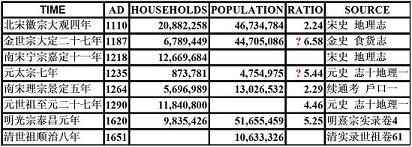 Khubilai was recalled to Karakorum (Helin) by Mengke Khan due to some dissension sowed by the Mongol ministers. After expressing loyalty and kinsmenship, the two brothers came to good terms. Thinking that an ex-Mongol emissary, dispatched by Naimazhen-shi, had died in Southern Song custody, Mengke decided to raise a huge army against the Chinese in the south. In September of 1257, the Mongols, with 40,000 cavalry, departed today's Mongolia for attacking the Sichuan-Shenxi areas again.
Kubilai's eastern route army departed Kaiping in November of 1258.
By December 1258, the Mongols under Mengke sacked Chinese forts in today's central and northern Sichuan and contemplated upon attacking the Diaoyu-cheng fort.
From the south, Wulianghetai, after pacifying Annam (i.e., northern Vietnam), at one time attacked today's Guangxi Province from Dali to lend support to Annam which was campaigned against by Southern Soong.
After crossing the Jialingjiang River, the Mongols sacked Jianmen and Chengdu.
In January 1259, Mengke sent defector Jinn Guobao to pacifying the Soong Chinese.
In February, the Mongols began the Diaoyucheng (line and hook castle) siege, with Shi Tianze and Whang Dechen attacking the Chinese water-borne army from the west and south.
The Mongols crossed the Qu-jiang River to attack Diaoyucheng from the east.
A Chinese general at Hezhou, by the name of Wang Jian, successfully defeated several waves of the Mongol attacks. After half a year of siege, the Mongols retreated after their general (Whang Dechen) died of the stone attack by the Soong Chinese.
Wang Jian, i.e., the Chinese general in charge of Diaoyushan, was a subordinate of Meng Gong as well as Yu Jie (xuan-hu shi) who was the mastermind designing the Sichuan mountain defense lines.
Wang Jian, a general who once followed Yu Jie in the northern campaign, carved out a perpendicular mountaintop fort with eight gates, plus a secret cave exit for making stealthy attack at the enemy from behind.
Whang Dechen's Mongol army was repelled in attacking the Huguo-men (nation protection) gate.
In mid-May, Wang Jian, commanding a commando column, raided Mengke's tents on one night.
Lv Wende, commanding a Southern Soong navy, sailed upperstream from today's Chungking along the Yangtze to render relief to Diaoyucheng but was repelled by Shi Tianze at Heishixia (black stone gorge) in July.
In July 1259, Mengke Khan personally directed the Mongol army at Mount Ma'an-shan (saddle hill), where they set up high storey observation posts.
Wang Jian, after observing the Mongols' activities, ordered the cannons to blast the Mongols.
Mengke was injured during the blast.
Wang Jian ordered to throw down pancakes with letter to the effect that the Chinese had grain supply for ten years.
In late July, Mengke, who was mad with Wang Jian's letter, personally sailed down the Yangtze to attack Chungking to the southeast while leaving a portion of his army to continue the siege of Diaoyu.
In August, at Wentangxia (lukewarm spring gorge), Mengke died of the wound suffered at Diaoyushan of Hezhou Prefecture (today's Chungking, Sichuan Province).
Also dead from months of siege against the mountain fortress would be Mongol general Whang Dechen who was killed by the rolling stones in June.
The Mongols hence called off the campaign.
Khubilai was recalled to Karakorum (Helin) by Mengke Khan due to some dissension sowed by the Mongol ministers. After expressing loyalty and kinsmenship, the two brothers came to good terms. Thinking that an ex-Mongol emissary, dispatched by Naimazhen-shi, had died in Southern Song custody, Mengke decided to raise a huge army against the Chinese in the south. In September of 1257, the Mongols, with 40,000 cavalry, departed today's Mongolia for attacking the Sichuan-Shenxi areas again.
Kubilai's eastern route army departed Kaiping in November of 1258.
By December 1258, the Mongols under Mengke sacked Chinese forts in today's central and northern Sichuan and contemplated upon attacking the Diaoyu-cheng fort.
From the south, Wulianghetai, after pacifying Annam (i.e., northern Vietnam), at one time attacked today's Guangxi Province from Dali to lend support to Annam which was campaigned against by Southern Soong.
After crossing the Jialingjiang River, the Mongols sacked Jianmen and Chengdu.
In January 1259, Mengke sent defector Jinn Guobao to pacifying the Soong Chinese.
In February, the Mongols began the Diaoyucheng (line and hook castle) siege, with Shi Tianze and Whang Dechen attacking the Chinese water-borne army from the west and south.
The Mongols crossed the Qu-jiang River to attack Diaoyucheng from the east.
A Chinese general at Hezhou, by the name of Wang Jian, successfully defeated several waves of the Mongol attacks. After half a year of siege, the Mongols retreated after their general (Whang Dechen) died of the stone attack by the Soong Chinese.
Wang Jian, i.e., the Chinese general in charge of Diaoyushan, was a subordinate of Meng Gong as well as Yu Jie (xuan-hu shi) who was the mastermind designing the Sichuan mountain defense lines.
Wang Jian, a general who once followed Yu Jie in the northern campaign, carved out a perpendicular mountaintop fort with eight gates, plus a secret cave exit for making stealthy attack at the enemy from behind.
Whang Dechen's Mongol army was repelled in attacking the Huguo-men (nation protection) gate.
In mid-May, Wang Jian, commanding a commando column, raided Mengke's tents on one night.
Lv Wende, commanding a Southern Soong navy, sailed upperstream from today's Chungking along the Yangtze to render relief to Diaoyucheng but was repelled by Shi Tianze at Heishixia (black stone gorge) in July.
In July 1259, Mengke Khan personally directed the Mongol army at Mount Ma'an-shan (saddle hill), where they set up high storey observation posts.
Wang Jian, after observing the Mongols' activities, ordered the cannons to blast the Mongols.
Mengke was injured during the blast.
Wang Jian ordered to throw down pancakes with letter to the effect that the Chinese had grain supply for ten years.
In late July, Mengke, who was mad with Wang Jian's letter, personally sailed down the Yangtze to attack Chungking to the southeast while leaving a portion of his army to continue the siege of Diaoyu.
In August, at Wentangxia (lukewarm spring gorge), Mengke died of the wound suffered at Diaoyushan of Hezhou Prefecture (today's Chungking, Sichuan Province).
Also dead from months of siege against the mountain fortress would be Mongol general Whang Dechen who was killed by the rolling stones in June.
The Mongols hence called off the campaign.
* In Commemoration of China's Fall under the Alien Conquests in A.D. 1279,
A.D. 1644 & A.D. 1949 *
 U.S.S.R./Comintern Alliance with the KMT & CCP (1923-1927)
U.S.S.R./Comintern Alliance with the KMT & CCP (1923-1927)
 Korean/Chinese Communists & the 1931 Japanese Invasion of Manchuria Korean/Chinese Communists & the 1931 Japanese Invasion of Manchuria
American Involvement in China: Soviet Operation Snow, IPR Conspiracy, Dixie Mission, Stilwell
Incident, O.S.S. Scheme, Coalition Government Crap, Amerasia Case & The China White Paper
* Stay tuned for "Republican China 1911-1955: A Complete Untold History" *
|
|
Zou Rong's Revolutionary Army;
Shin Kyu Sik's
Shrine (Spirit, Kunitama) of Korea
|
This snippet is for sons and daughters of China:
Heed the sons & ministers' agony and sorrow of our ancestors who died or lived through the Mongol, Manchu and Soviet-Chicom conquest
and
the Yongjia, Jingkang and Jiashen cataclysms !
Jeanne d'Arc of China:
Teenager girl Xun Guan breaking out of the Wancheng city to borrow the relief troops in the late Western Jinn dynasty;
Liu-Shao-shi riding into the barbarian army to rescue her husband in the late Western Jinn dynasty;
teenager girl Shen Yunying breaking into Zhang Xianzhong's rebels on the horseback to avenge on father's death in the late Ming dynasty.
China's Solitary and Lone Heroes:
Nan Jiyun breaking out of the Suiyang siege and charging back into the city in the Tang dynasty;
Zhang Gui & Zhang Shun Brothers breaking through the Mongol siege of Xiangyang in the Southern Soong dynasty;
Liu Tiejun breaking through three communist field armies' siege of Kaifeng in the Republican China time period;
Zhang Jian's lone confrontation against the communist army during the June 3rd & 4th Massacre of 1989.
|
|
|
Meanwhile, not knowing of Mengke's death, Khubilai just crossed the Huai River in September, crossed Dabieshan Mountain, and arrived at Huangpo [Huangpi] in today's Hubei Province.
Jia Sidao was ordered to sail along the Yangtze to lend relief to E'zhou.
Meanwhile, Lü Wende's navy sailed downstream to aid E'zhou.
After defeating Badu'er, Lü Wendao entered the E'zhou city (i.e., Wuchang of today's Hubei Province).
Two Chinese brothers under Khubilai, Dong Wenbing and Dong Wenyong, crossed the Yangtze River to lay siege on E'cheng of today's Hubei Province.
Hearing of Mengke Khan's death, Khubilai continued to attack E'zhou while sending a diversionary force to sack Yueyang.
Khubilai wrote to Subetei's son, i.e., Wulianghetai, in the hope of attacking Soong from two directions.
The Soong Chinese at Han'yang, under Prime Minister Jia Sidao, secretly negotiated for peace with the Mongols by promising 200,000 units of silver and silk, each.
Khubilai then returned north.
Khubilai, ending the seven year war with the Soong Chinese, was to be engaged in four years' wars with Arik-Buka (Ariq-boeke).
Subetei's son Wulianghetai, coming to the east in June 1259, attacked today's Hunan Province.
In November, Wulianghetai, after slaughtering the tribal states of southwestern China, arrived at Tanzhou (Changsha of today's Hunan Province).
Hearing of the peace deal, Subetei's son went north, too.
Wulianghetai, after one month siege of Tanzhou, withdrew to north of the Yangtze.
In December, Jia Sidao's Soong army ambushed the Mongol hind army which were subordinate to Subetei's son, four times.
The Mongol hind army, about 10,000 men under the command of a 'wan hu' (ten thosuand households) general, failed to pass through the territory.
By February of 1260, the stranded Mongols were all killed in Hengshan, next to the Ziqi-guo territory whose people previously died to the last person resisting the Mongols.
Jia Sidao then claimed to Soong Emperor Lizong that he had defeated the Mongols. Jia Sidao was conferred the title of Duke Weiguo-gong.
Khubilai Khan and the Yuan Dynasty (A.D. 1271-1368)
Before returning to Helin, Arik-Buka (Ariq-boeke), a junior brother of Khubilai, held an assembly in Helin and declared himself 'khan'. Khubilai stopped at Jinlianchuan (Kaiping, i.e., Duolun, Cha'haer, Inner Mongolia) and declared himself Khan without an assembly. Yao Shu and Lian Xixian were ordered to make an announcement of the Khubilai's enthronement in the Chinese language. A Chinese era was declared, and the year would be the First Year of the Zhongtong Era, A.D. 1259. Liu Bingzhong and Xu Heng revised on Genghis Khan's governmental structure of 'Duanshi-guan' (criminal prosecutor), 'Wan-hu' (10,000 head military chief), and the Jurchen-style titles of 'yuan-shuai' (marshal) and 'xuan-hu' (pacifier) for provinces. New structure will be i) 'zhongshu sheng' (state affairs), ii) 'shumi yuan' (military affairs), and iii) 'yushi tai' (promotion and demotion of officials). Lower levels will include shi, jian, yuan, si, wei, and fu. Provincial affairs would be handled by 'xing-sheng', 'xing-tai', 'xuan-hu', 'lian-fang' and 'muming zhangguan', and levels included 'Lu' (comprising of several provinces), 'Fu' (province or prefecture), 'Zhou' (smaller prefectures) and 'Xian' (county).
In A.D. 1271, Khubilai declared the Yuan dynasty.
This was at the instigation of minister Wang Yun4.
Yuan dynasty minister Wang Yun petitioned with Khubilai to establish
a country's name after an imperial era was declared, which should be the Menggu (Mongol) state,
followed by declaration of the Yuan dynasty in A.D. 1271.
The Mongols previously adopted the Tanguts or Jurchens' way of calling themselves by 'Da Chao' or the grand court in the opinion of Hirata Shigeki, with Da Chao' being equivalent to 'Yuan Chao' or the Yuan court (dynasty).
After declaring his dynasty of 'Da Yuan' (A.D. 1271-1368) on the 'yi-hai' day of November, A.D. 1271, Khubilai Khan could only be considered a ruler of China and Mongolia.
The edict claimed that the Mongols inherited the 'jing-ming' grand mandate,
standardized the dynastic epochs ('ji tong')
by
following the example of one hundred past kings [of Sinitic China] ('shao bai wang') -- which was a practice from remote antiquity ('long gu'),
and
adopted the 'Da Yuan' title that was embedded in the 'qian-yuan' name from The Book of Changes after tracing how the thearchs and sage kings derived their dynastic names, namely, Lord Yao's 'Tang2' meaning spacious and grand, Lord Shun's 'Yu2' meaning happy, Lord Yu's 'Xia' meaning large, and Shang King Shang-tang's 'Yin' meaning the middle (i.e., Sinitic center), etc.
However,
discrimination against the Chinese was rampant. The Mongols would assume the primary posts while the Han Chinese the deputy posts. Tax administration could only be laid in the hands of Muslims - allies of the Mongols. A caste society was established, and four levels were differentiated: 1) the Mongols, 2) Se Mu Ren or Semuren (i.e., commonly taken as literal 'se' [various colored] and 'mu' [categorized] people -actually meaning various classes of people), 3) Han-Ren (i.e., the northern Chinese, the Khitans, etc.), and 4) Nan-zi (the southern "Chinese-barbarians"). After the conquest of China, the Mongols implemented the barbarian Droit du seigneur onto the villagers. (See Xu Dachao, a Soong-Yuan survivor from today's Suzhou, "Jin Yu Lu [records from the ember of the Mongol fire]". The Chinese women must have killed their first-born babies in light of the fact that the Mongol gene was rare among today's Chinese population.
Soong loyalist Zheng Sixiao wrote Xin Shi (The History [Book] of Heart), and sank it in a tin-iron box into a well in the late 13th century A.D., with the book rediscovered about three and half centuries later.
Revolutionary forerunner Zhang Taiyan (Zhang Binglin), a staunch anti-Manchu revolutionary scholar, invoked Xin Shi (The History [Book] of Heart), for rallying the nationalist movements against the Manchu rule. Chiang Kai-shek and the other Xin Hai revolutionaries invoked the same book in the overthrow of the Manchu rule.)
Arik-Buka (Ariq-boeke), a junior brother of Khubilai, held an assembly in Helin and declared himself 'khan'. Lian Xixian, on his own initiative, frustrated the attempts of Arik-Buka's emissaries (Liu Taiping and Huo Luhuai) at today's Peking and defeated a general who answered Arik-Buka's order. Khubilai then attacked Arik-Buka and drove him off in A.D. 1261. The two brothers fought against each other for five years. After being in reign for five years, Khubilai Khan declared the new era of Zhiyuan in A.D. 1263. (In A.D. 1271, the Mongols adopted the dynastic name Yuan.)
At the advice of Liu Bingzhong, Khubilai Khan, in A.D. 1264 [the 5th year of Soong Emperor Lizong's Jingding Era], moved his capital to today's Peking, i.e., winter capital Dadu ("great capital") or Khanbalik in Marco Polo's Cambaluc. This is in addition to a summer palace at Shangdu (the Xanadu of Coleridge).
Khubilai Khan sent an embassy, comprising of scholar officials Hao Jing, He Yuan and Liu Renjie, to Southern Soong. The Southern Soong Prime Minister, in order to hide his previous treachery acts from Emperor Lizong (Zhao Yun, reign A.D. 1224-1264), would imprison the Mongol emissaries. Khubilai Khan sent another emissary to Soong border general Li Tingzhi. Li's report to Emperor Lizong was covered up by Jia Sidao. Khubilai Khan issued a war decree in the second year of the Zhongtong Era (A.D. 1260). The Mongol governor-general in charge of the Huai River and Yangtze areas, Li Zhan (Li Tan?), defected to Soong in the spring of the third year of the Zhongtong Era. Hearing of that, Khubilai Khan ordered that Shi Tianze to attack the defector general at today's Ji'nan, Shandong. After a few months' siege, the Mongols took over Ji'nan and killed Li Zhan via a cruel penalty of splitting the body.
The Siege Of Xiangyang (A.D. 1267-1272)
Around A.D. 1264, during the fifth year of the Zhongtong Era, Khubilai Khan changed the name of his era to the Zhiyuan Era. Arik-Buka was spared and came to surrender. At this time, a Soong officer at Tongchuan, called Liu Zheng, who was being resented by Jia Sidao, surrendered his 15 prefectures to the Mongols and he was conferred the posts of 'xing(2)sheng(3)' and 'an-hu-shi' for today's Sichuan areas. Liu Zheng proposed to have the Soong Chinese's grain supply cut off at Xiangyang. The Soong Chinese General in Sichuan, Lü Wende, did not pay attention to Liu Zheng's building up the castles and cutting off Xiangyang from Sichuan. Lü Wende said that Xiangyang had ten years of grain supply. General Lü Wenhuan at Xiangyang wrote to Lu Wende, but he was ignored. Liu Zheng and A-zu led the Mongols to Xiangyang and encircled it for four-five years. The new Soong Emperor, Duzong (Zhao Qi, reign A.D. 1264-1274), conferred Jia Sidao important posts and added an extra title called 'Tai Shi', i.e., imperial tutor. Jia Sidao was extolled as comparable to the Archduke Zhou of Western Zhou Dynasty. Jia Sidao pretended to resign several times, but Emperor Duzong would not let him go. Jia Sizong continued to shield the news of the Xiangyang siege from the emperor. When a concubine told Duzong that Xiangyang had been under siege for 3 years, Jia Sidao would order that the woman be killed. The notoriety of Jia Sidao was best illustrated by another story: When one concubine of Jia Sidao saw a young man on the bank of the Xihu Lake (West Lake) and exclaimed about the beauty of the young man, Jia Sidao would order that the young man be killed in front of the concubine.
In Sichuan, after Lü Wende died, his brother-in-law, Fan Wenhu, took over the post; but Fan, like his predecessor, refused to send the relief army to Xiangyang. At one time, Jia Sidao ordered Li Tingzhi and Fan Wenhu to aid Xiangyang. Fan Wenhu and his 100,000 were defeated.
Taking advantage of rising tides of the Han-shui River,
Zhang Shun and Zhang Gui, together with Fan Tianshun, in May departed Gaotougang (high head) port and sailed one hundred ships downstream for 120 leagues along the Han-shui River from Junzhou (Danjiangkou/Yunxian, Hubei), with canons, fire arrows, burning charcoal, huge hatchets and strong bows mounted at the front of ships.
Each ship carried thirty troops, plus one bag of salt and two hundred folds of cloth.
This relief mission was launched before the Soong court's allocated funds of tens of millions of money were to arrive in June.
Zhao-zhong Lu (book to propagate the loyalty), an anonymous book from the early Mongol Yuan dynasty, claimed that in May, the relief column took twenty-two days to reach Tuanshan (circled hill), and marched to Gaotougang (high head port) in two days, where the ships formed into a square shape.
At night, when water outflow clepsydra timekeeping device reached the third dial, the ships sailed with the red lantern as a signal.
Zhang Gui, leading the way ahead of Zhang Shun, cut the Mongol iron chains with huge hatchets during the night attack and broke through the Mongol midstream siege lines at Mohongtan (grinding flood beach).
The Mongol army troops, who were fully lined up on the ships, when jumping onto the bottom-less san-lian-zhou chained ships, fell into the water and drowned to death by ten thousand.
Zhang Shun died on the Han-shui River.
Xin Yuan Shi stated that the Mongols defeated and captured Zhang Shun on the 'kui-mao' day of August.
Zhao-zhong Lu stated that Zhang Shun's body flew to Xiangyang, and was found to have incurred four spear wounds and six arrows' wounds.
Zhang Gui entered Xiangyang at dawn on the 25th day according to Zhao-zhong Lu.
In March 1270, Liu Zheng proposed to Khubilai to build a Mongol navy for attacking Xiangyang.
In March 1272, the Mongols began to attacked and took over the Soong Guchengbao (ancient castle fort) outpost north of Fancheng and at the Bai-he and Han-shui Rivers' confluence.
In May, Li Tingzhi deployed all troops at Ying3zhou (Zhongxiang) south of Xiangyang and Junzhou (Danjiangkou) west of Fancheng.
With Fan Wenhu not providing troops, Li Tingzhi recruited 3000 militia from Xishan (west hill) of Xiangying, headed by Zhang Shun and Zhang Gui.
Taking advantage of rising tides of the Han-shui River,
two generals under Li Tingzhi, Zhang Shun and Zhang Gui, on May 24th sailed downstream along the Han-shui River from Junzhou; Zhang Gui broke through the Mongol midstream siege lines, and Zhang Shun died on the Han-shui River. Zhang Gui barely entered Xiangyang alive on May 25th.
This breakthrough with extra manpower and materials, May or August, greatly enhanced the defenders' morale.
After finding out that Xiangyang was in great urgency, Zhang Shun was to implement Li Tingzhi's plan to sail downstream for sake of appealing for aid with Fan Wenhu.
After finding out that Xiangyang was in great urgency, Zhang Gui was to implement Li Tingzhi's plan to sail downstream for sake of appealing for aid with Fan Wenhu.
In September, hiring two brave men and with 2000 troops, Zhang Gui departed Xiangyang
to seek conjunction with the Soong army at Ying3zhou (Zhongxiang, Hubei). But soon after Zhang Gui broke through the Mongol siege lines, he encountered the Mongol ships.
Xia Gui, sailing upstream, failed to connect with Zhang Gui when being impeded by the Mongols at Longweizhou (dragon tail island).
Zhang Gui, who ordered the boats to return upstream,
was caught at Guimen-guan (ghost gate pass) by the Mongols who chased behind, and Zhang died in the Mongols' hands.
Zhang Gui's body was displayed to the Xiangyang defenders so as to degrade the Soong Chinese morale.
Then, the sister city of Fancheng was taken over by the Mongols, and two generals, Fan Tianshun and Niu Fu, died. The Mongols deployed catapults (made by the Persian engineers) against the outer wall of Xiangyang and destroyed it. Every time Lü Wenhuan climbed up the citywall, he would have tears while facing the south. A Mongol general called on Lü Wenhuan to surrender, saying that Lü Wenhuan had done his job by guarding Xiangyang for five years. After they broke the arrows to swear forgiveness and sincerity, Lü Wenhuan surrendered and was conferred the post of 'Da-dudu' or governor-general for Xiangyang and the Han-shui River areas.
* In Commemoration of China's Fall under the Alien Conquests in A.D. 1279,
A.D. 1644 & A.D. 1949 *
 U.S.S.R./Comintern Alliance with the KMT & CCP (1923-1927)
U.S.S.R./Comintern Alliance with the KMT & CCP (1923-1927)
 Korean/Chinese Communists & the 1931 Japanese Invasion of Manchuria Korean/Chinese Communists & the 1931 Japanese Invasion of Manchuria
American Involvement in China: Soviet Operation Snow, IPR Conspiracy, Dixie Mission, Stilwell
Incident, O.S.S. Scheme, Coalition Government Crap, Amerasia Case & The China White Paper
* Stay tuned for "Republican China 1911-1955: A Complete Untold History" *
|
|
Zou Rong's Revolutionary Army;
Shin Kyu Sik's
Shrine (Spirit, Kunitama) of Korea
|
This snippet is for sons and daughters of China:
Heed the sons & ministers' agony and sorrow of our ancestors who died or lived through the Mongol, Manchu and Soviet-Chicom conquest
and
the Yongjia, Jingkang and Jiashen cataclysms !
Jeanne d'Arc of China:
Teenager girl Xun Guan breaking out of the Wancheng city to borrow the relief troops in the late Western Jinn dynasty;
Liu-Shao-shi riding into the barbarian army to rescue her husband in the late Western Jinn dynasty;
teenager girl Shen Yunying breaking into Zhang Xianzhong's rebels on the horseback to avenge on father's death in the late Ming dynasty.
China's Solitary and Lone Heroes:
Nan Jiyun breaking out of the Suiyang siege and charging back into the city in the Tang dynasty;
Zhang Gui & Zhang Shun Brothers breaking through the Mongol siege of Xiangyang in the Southern Soong dynasty;
Liu Tiejun breaking through three communist field armies' siege of Kaifeng in the Republican China time period;
Zhang Jian's lone confrontation against the communist army during the June 3rd & 4th Massacre of 1989.
|
|
|
Demise of The Soong Dynasty
At this time, Emperor Duzong died, and his four year old son, Emperor Gongdi (Zhao Xian, reign 1274-1275), was made emperor in A.D. 1275. The Mongols sent Shi Tianze and Boyan (Bayan, grandson of Subetei) on a full campaign against Soong. Shi Tianze died en route. Bayan ordered that A-zu head the first column and depart for the Yangtze from Xiangyang, with Lu Wenhuan as the fore-runner general; the 2nd column was to be headed by Mang-wu departing from Yangzhou, with Liu Zheng as the forerunner general. Bayan took over numerous cities on the way, slaughtered one town, and killed and captured numerous Soong generals. Soong Dowager Empress Xie-shi had no choice but to rely on Jia Sidao for fighting the Mongols. More Soong generals surrendered, including Fan Wenhu in Sichuan, Chen Yi in Huangzhou (the Huanggang area, Hubei). Hearing that Liu Zheng had passed away, Jia Sidao had a short ecstasy and led an army of about 130,000 against the Mongols, but he was defeated on the Yangtze River. In today's Jiangsu areas, around the Yangtze, Zhenjiang and Jiangyin were deserted in face of the Mongol attacks. Jia Sidao sent an emissary to Bayan for peace, but met with declination. Jia Sidao requested with the dowager empress for relocation of the Soong capital. Empress Xie-shi refused to move.
Several ministers at the Soong court requested that Jia Sidao be deprived of his posts, and Soong released former Mongol emissaries like Hao Jing as a good-will gesture. At this moment, Zhang Shijie of E'zhou (Hubei Province), Wen Tianxiang of today's Jiangxi and Li Fei of today's Hunan came to the east to help the Soong court. Jiankang (i.e., Nanking) was deserted by a Soong general. Changzhou and Wuxi were next taken by the Mongols. Khubilai Khan then sent Lian Xixian2 and Yan Zhongfan to Soong for talking about a ceasefire. Lian Xixian2 requested with Bayan for bodyguards, but Bayan advised that the more bodyguards Lian was to take with him, the more likely the Soong Chinese might harm him. Lian obtained 500 soldiers, but once Lian arrived at the Dusong-guan Pass, Soong General Zhang Ru killed Yan Zhongfan and captured Lian Xixian2. (History of the Yuan Dynasty stated that Lian was killed, too.) Bayan reprimanded Soong's acts, and sent another emissary, Zhang Xu, to the Soong court together with a Soong emissary. Again, Zhang Xu was killed by a Soong border general. Then, the Mongols stopped the peace talks and attacked Yangzhou on the north bank of the Yangtze (Changjiang River). The Mongols then attacked Yangzhou and defeated two generals under Li Tingzhi. The Jiading city surrendered next. Zhang Shijie's navy was defeated on the Yangtze by a Mongol fire attack. Wen Tianxiang arrived in Lin'an (Hangzhou) the capital, but Empress Dowager did not take his advice. Jia Sidao was expelled from the capital and he was killed by the escort official en route of exile. Taizhou of today's Jiangsu was lost to the Mongols, and Changzhou was slaughtered. In today's Hunan, Li Fei died, and both Hunan and Jiangxi Provinces were lost. After taking over the Dusong-guan Pass, the Mongols were closing in onto the Soong capital. A Soong minister called Liu Yue was sent to the Mongol camp for peace, but Bayan declined it, saying the Soong Emperor obtained the throne from a kid and would lose it in the hands of a kid. Lu Xufu was sent to the Mongols for expressing a wish to be a Mongol nephew, but the Mongols declined it. Soong's new prime minister, Chen Yizhong, sent Liu Yue to the Mongols in the attempt of expressing acknowledgement as a Mongol vassal, but Liu Yue was killed by a Soong Chinese civilian en route, at Gaoyou of today's Jiangsu Province. The Mongols then sacked Jiaxing and An'jie of today's Zhejiang Province. Wen Tianxiang and Zhang Shijie advised that the Soong court relocated to the islands in the seas, but Prime Minister Chen Yizhong decided to send in the imperial seal to Mongols for a surrender. Bayan requested that Chen personally came to the Mongols' camp, and Chen fled to Wenzhou, a southern Zhejiang coastal city. Zhang Shijie led his people into the sea. Wen Tianxiang was made the rightside prime minister and was ordered to go to the Mongols for peace. Wen was arrested by Bayan after he accused Bayan of invasion. In A.D. 1276, Bayan took over Lin'an and forced dowager empress to issue the surrender order. The Soong royal family, including dowager empress and Emperor Gongdi, was sent to today's Peking.
Late Emperor Duzong had two more sons, 11 and 6 year old, respectively. They fled to Wenzhou before Lin'an was taken by the Mongols. Chen Yizhong sailed them to Fuzhou of today's Fujian Province where a new Soong court was set up. Eleven year old Zhao Shi was made into Emperor Ruizong (reign A.D. 1275-1278). Zhang Shijie, Su Liuyi, and Lu Xiufu consecutively arrived in Fuzhou. Chen Yizhong was retained as the leftside prime minister, while Wen Tianxiang, after fleeing from the Mongols, also arrived in Fuzhou and acted as the rightside prime minister. The Soong court lasted another three years before a final demise. The Mongols continued to push south. Canton (Guangzhou) of today's Guangdong Province was taken, and Soong General Huang Jun died. Yangzhou on the Yangtze Bank were taken, and General Li Tingzhi was captured and killed. The Mongols then invaded today's Fujian Province. The Soong Court was frequently on the run, from one island to another, along the coast, and the new Soong Emperor died of illness within two years. The now eight-year-old brother, Zhao Bing, was made into the new emperor Di-bing in A.D. 1278. Note Di-bing had no posthumous imperial title at all. Chen Yizhong died in Hai'nan, Lu Xiufu was made into the leftside prime minister. When the Mongols attacked again, the Soong Court fled to Yashan, somewhere near Macao. Mongol General Zhang Hongfan led a surprise attack at Chaoyang (Chaoshan areas, Guangdong Province) and captured Wen Tianxiang who later wrote the famous poem entitled 'Ling Ding Yang' or 'the Lingding Sea'. Zhang Shijie nailed together his fleet, trying to defend the straits. Zhang Shijie declined Zhang Hongfan's persuasion for surrender. After a defeat, Zhang Shijie broke through the siege with 16 ships. When chased by the Mongols, Lu Xiufu, with the young emperor on his back, jumped into the sea after driving his family into the sea. Zhang Shijie met with a hurricane near the Hailingshan Mountain, preyed that his ship sink should the Heaven intend to capsize the Soong Dynasty, and died when his ship was sunken. The Soong Dynasty officially ended in A.D. 1279, after a total of 320 years, including 152 years in southern China. The Soong royal tombs would be dug up by a Central Asian monk for treasures. Khubilai Khan declared the dynasty of Yuan ("first" or "beginning") in this year.
In today's Sichuan Province, as said by
Liu-sha-he, the Mongols sacked today's Chengdu city for a second time and left 1.4 million skeletons.
Liu-sha-he cited Yuan Dynasty's Heh Qingquan in stating that the Mongol army killed the Chengdu people in batches of 50 and repeatedly pierced the dead bodies to make sure victims had been actually killed.
(Liu-sha-he also had comments on the Di[1] barbarians' massacring Chengdu in 301 A.D. as well as rebel Zhang Xianzhong's slaughter in A.D. 1644.)
The Death Toll in the Hands of the Mongols
Forums where this webmaster had extensive discussions on the Mongol/Manchu massacres
http://www.chinahistoryforum.com/index.php?/topic/35697-chinas-outrageous-mortality-statistics/page__p__5005092#entry5005092
http://www.chinahistoryforum.com/index.php?/topic/19969-why-qing-survived-for-so-long/page__st__15
http://www.chinahistoryforum.com/index.php?/topic/13884-population-of-southern-song/
About the Soong population. It is
about time for me to go against the history books, and use my judgment to make
a case as to how many people had been killed and how the household ratios
changed during the said time period.
First, we want to say that the household numbers and the
headcounts were both valid, though not exact. The Soong Chinese families had a stable composition as to the children
born, and with the onset of the barbarian conquests by the Jurchens and the Mongols consecutively, the household ratio numbers changed in the Jurchen domain or the Mongol domain. The explanations could be: i) Possibly the conquerors and the surviving inhabitants took in the extra women, and ii) possibly the conquerors adopted the same policy as was practiced
by the Kim family in North Korea and by Mao in China, namely, encouraging the massive births,
was adopted, which should explain the extremely high ratio like 6.58 in
North China under the Jurchen rule (in A.D. 1187, with
6.789 million households but extraordinarily high headcounts of 44.7 million
people), the ratio of 5.44 in North China under the Mongol rule (in A.D. 1235,
with 0.873 million households but in contrast a higher headcount of 4.75
million people), and 4.46 in whole China under the Mongol rule (in A.D. 1290, with
11.8 million households but a higher headcount of 58.83 million people).
Now, let me explain the numbers by analyzing the households and headcounts.
Before the Jurchen conquest of North China in AD
1126, we had 20+ million households or 46.7+ million people. Namely,
AD 1100 ......... 19,960,812 households;
AD 1110 ......... 20,882,258 households or 46,734,784 people.
After the Jurchen conquest of North China, in AD
1218, about 92 years later, Southern Soong China had 12.669+ million households, south of the Huai-he River and the Qinling
Ridge, and inclusive of South China. (The rest fell under the Jurchen rule.)
Namely,
AD 1218 ......... 12,669,684 households (under the Southern Soong rule)
NOTE: ALTERNATIVE CLAIM POINTS TO THE APEX OF THE CHINESE POPULATION, prior to
the Mongol conquest, to be at 90+ MILLION
in A.D. 1222.
How do we reconcile the numbers? The household ratios had changed over the past
century. The number that was cited but was disputed to be inaccurate would
be the from-to numbers.
1195-1223年(金章宗明昌六年---南宋嘉定十六年)
7681万人
Namely, from A.D. 1195 to A.D. 1223, there were 76 million
people, not itemized either to the Jurchen territory
or the Southern Soong territory.
Validation:
Assuming that Southern Soong China continued the old practice, and using the AD
1110 ratio of 2.24, then we had at minimum [approx.] 28.4 million people under
the Southern Soong rule in A.D. 1218, while the population under the Jurchen rule would have FAR multiplied over the base of AD
1187 number of 44.7 million.
In sequential order, the numbers for the population under Northern Soong [AD 960-1127] were steadily increasing prior to the Jurchen invasion:
AD 1063, 12,462,531 households;
AD 1066, 14,181,486 households;
AD 1077, 14,245,270 households;
AD 1086, 17,957,092 households;
AD 1094, 19,120,921 households;
AD 1100, 19,960,812 households;
AD 1110, 20,882,258 households.
After the Jurchen invasion, the population under Southern Soong [AD 1127-1279] gradually recovered.
AD 1218 12,669,684 households;
AD 1223 19,202,500 households.
For the population under the Jurchens, there is a number from Jurchen Emperor Zhangzong's A.D. 1207 census, namely, 7.68 million households
or 45.81 million headcounts.
金章宗太和七年(1207) 户七百六八万,4581万
In sequential order, the numbers for the population under the Jurchen rule look to be in conformity with some constant
growth rate at peace times:
AD 1187 44.7 million head;
AD 1207 45.81 million heads.
Combining the Southern Soong population in A.D. 1223 with the Jurchen Jin population in A.D. 1207, we have
19,202,500 households * 2.26 + 45.81 million heads = 89.21 million heads.
So, the estimated from-to number of 76 million [from A.D. 1195 to A.D. 1223] for both Jurchen Jin [AD 1115-1234] and Southern Soong in A.D. 1223 is very
conservative, and the popular claim that the whole China possessed 90+ Million
people prior to the Mongol conquest is valid.
For the popular claim of a total of 93.47 million
in A.D. 1122-, see
http://www.google.co...iw=1157&bih=559
THE MONGOL CONQUEST
The brutal Mongol quest of the Jurchens decimated the
North China population, to a meager number of
873,781, namely 0.873 million households or 4.755
million headcounts in A.D. 1235 in North China. (This number must
have included the Mongol invasion forces from the steppe.)
Using the Mongol Yuan Dynasty records, the incremental population gain in North
China from A.D. 1235 to A.D. 1290 was another meager number of 0.4816 million
households.
Namely,
NORTH+SOUTH=13,196,206 households in A.D. 1290;
NORTH CHINA = 13,196,206 [South+North] - 11,840,800
[South China] = 1,355,406 households {North China] in A.D. 1290;
NORTHERN CHINA GAIN = 1,355,406 - 873,781 = 481,625 households from A.D. 1235 to
AD 1290. That was about 50% gain in about half a century.
In the ensuing half-century, there occurred Mongols' attrition wars against
Southern Soong, till the demise of the Southern Soong Dynasty in 1279.
There was an imperial
Southern Soong census number in A.D. 1264 of 5,696,989 households or 13,026,532
headcounts, maintaining the century old household ratio of about 2.29.
On the surface, for the Southern Soong dynasty, there was a halving of the
household numbers to 5.696 million in A.D. 1264 from 12.669 million in A.D. 1218.
What happened? At http://www.chinahist...ost__p__4848739 we discussed the attrition
warfare. Back in the first part of the century, in A.D. 1227, the Mongols began
to raid into Hanzhong and Sichuan, after conquest of
the Tanguts. From A.D. 1227 to A.D. 1290, the
population in the Sichuan area, which used to be 19.4% of Southern Soong China's
population in A.D. 1223 or 2.59 million households, was wiped out by the Mongols.
By A.D. 1290, there were only 100,000+ people left in the whole Sichuan basin,
from approximately the base of [approx.] 6 million people in A.D. 1223.
This 67-year attrition loss in Sichuan alone, from A.D. 1223 to A.D. 1290, was a
good mirror when comparing the nationwide drop of the household numbers to
5.696 million in A.D. 1264 from 12.669 million in A.D. 1218, which was a span of 56
years.
There were
several massive scale zigzag territorial changes: around A.D. 1261, a Southern Soong general for Tongchuan Circuit,
which used to be the name for the area around the Yellow River inflection point, called Liu Zheng,
for being resented by prime minister Jia
Sidao, surrendered his 15 prefectures to the Mongols.
Note 成都府路、潼川府路,
namely, the Chengdu (Sichuan) Circuit and the Tongchuan
Circuit, together with four circuits of the Southeastern China at the coast,
had the 72-73% of the total population of the Southern Soong Dynasty.
Alternatively speaking, the halving drop of the household numbers was very well
supported by the historical facts related to the two circuits.
In contrast with Liu Zheng's defection to the
Mongols, there was a general on the Mongol side, who defected to Southern Soong
with the land and people around the Huai-shui River.
The Number of 5.696 Million Households or 13
Million People in A.D. 1264
Please note that the above major event led to a
further drop in the population
when the rebellion quelling war was waged by the Soong court.
After one
year around civil war between Liu Zheng and the Soong
troops, Southern Soong managed to recover 3-4 prefectures.
The Mongols obtained part of the territory of Chengdu Circuit and the whole
Tongchuan circuit. See http://blog.sina.com...1f0100fr04.html for discussions on the loss of land and people in the western China.
The Number of 11,746,000 Households in A.D. 1276
versus Shang Yue's number of 9.3 Million Households
There was a dispute concerning the census data of
"11,746,000 households" in A.D. 1276, namely, the year the Southern
Soong dowager empress surrendered to the Mongols at the capital Hangzhou in
today's Zhejiang coastline. This number came from a book 《紫山大全集》 卷一一《效忠堂记》.
My point was that the
Mongols boasted of the conquest by claiming that the Southern Soong
court submitted the census books to the Mongols, but there was never ever a
census conducted in that year. The number of "11,746,000 households" of A.D. 1276 was either a rough census
that was taken by the Southern Soong court probably years before A.D. 1276, or most likely a number that Hu CHiyu (Hu Zhiyu), the said Mongol Han Chinese official who began to serve under the Mongols since A.D. 1260, derived independently of the household ministry.
Historian Shang Yue, 尚铖,
who was Kim Il-sun's teacher, had edited the book An
Outline of the Chinese History 《中国历史纲要》, in
which he pointed out that 元灭宋,得户九百三十万,
namely, after the Mongols destroyed Southern Soong, they obtained 9.3 million
more households. -So there is a discrepancy here between the number
of 9.3 million households from Shang Yue versus the paper number
"11,746,000 households" of A.D. 1276 from the editor of the book 《紫山大全集》 卷一一《效忠堂记》.
Note: Even if we use "11,746,000 households" of A.D. 1276 as a
reference, by A.D. 1290, there was virtually no change under the Mongol rule,
i.e., 11,840,800 households. This census of 11,840,800 households should have
included all domains of South China, including those taken by the Mongols
before the Yangtze Crossing of A.D. 1276, including the Southwestern China that was taken by the Mongols after the campaigns against Tibet and Vietnam but before the conquest against Southern Soong, and
the areas between the Huai River and Yangtze River,
where the Xiangyang city used to be the only LONELY
holdout during the period of 1267-1272.
AD 1276-AD 1290
In the interval of 24 years, from A.D. 1276 to A.D. 1290, South China had almost
no change in the total household numbers. What does that tell
you? It merely means that the prevalent growth rate among the Southern Chinese
had merely restored the population to 11,840,800 households in A.D. 1290, after
this many years. Remember that in North China, there
was an increase of 481,625 households from A.D. 1235 to A.D. 1290 or about 50% gain
in about half a century. You have to use an inverse growth rate to calculate
how the decimated Southern Soong households grew back to 11,840,800 households
in A.D. 1290.
While I acknowledge that Southeastern China did not incur the same wrath as
Sichuan's calamity of almost 99% population loss, the guess would be that 25% of the former
Southern Soong households were exterminated during the Mongol conquest.
Whatever on paper in A.D. 1276, namely, out of "11,746,000 households",
possibly one quarter was eliminated, or approximately 3 million households, and
after a quarter of a century, the households grew to 11,840,800 from the
decimated base, and using the hypothetical growth rate
of 25% for the quarter century time-frame, you very much fit in to the records.
Now, one more caveat, after a quarter of a century control by the Mongols, the
southern Chinese no longer observed the demography convention as before, and
hence you would have the household ratio of 4.46 in
AD 1290, no longer 2.24 or 2.26 under the former Soong rule.
THE FINAL DEATH-TOLL TALLY
Alternatively speaking, the population loss, using the households in
lieu of the headcounts, were far more severe. While the total
population South and North China combined in A.D. 1290 was 58 million, it did not
account for the household ratio change in both North China and South China. While
the North China ghost town was not disputed, the actual carnage for the South
China case has to be observed by examining the loss of households in South
China, not the headcounts.
A more precise approach would be to filter out
the "fake" or the extra population that was generated under the
Mongol hormone-policy, and then compare the new baseline
[removing the extra heads under the 4.46 ratio for calculation's sake] in AD
1290 with the figures prior to the Mongol quest. With this in mind, it is
reasonable to conclude that the Mongols had destroyed 80% of the original
Chinese population in both North China and South China.
In another word, for the total population South and North China combined in A.D.
1290, i.e., 58 million, you could only use half of it as the more accurate
numbers under the Soong ratio, and then compare against the 76 or 89.21 or 93.47 million heads - as discussed earlier. That means,
the Mongols destroyed 76 million - (58 million/2) = 47 million original
Chinese;
If using the original number of 90+ million, then
the Mongols destroyed 93.47 million - (58 million/2) = 64.47 million original
Chinese. <= Still not the full number, in my opinion.
* In the above, I divided the 58 million number by two, which was to normalize
the extra population growth by adopting the old 2.24-2.29 household ratio
versus the new 4.46 ratio
If Using the A.D. 1276 Cut-off Time for Southern
Soong & the A.D. 1235 for Jurchen Jin:
If using the A.D. 1235 cut-off number for Jurchen Jin, there
were 873,781, namely 0.873 million households or 4.755 million headcounts.
If using the A.D. 1276 cut-off time for Southern Soong, then there were 9.3
Million Households, and using the traditional Soong ratio of 2.29, there would
be 9.3*2.29 = approx. 21.3 million heads.
Then the Mongols would have eliminated
93.47 million - ( approx. 21.3 million Southern Soong +
[[approx 4.755 million in the former Jurchen
territory ]] ) = 67.42 million people.
Wu [no] Wang [forgetting] Zai [at] Ju [the Ju fort]
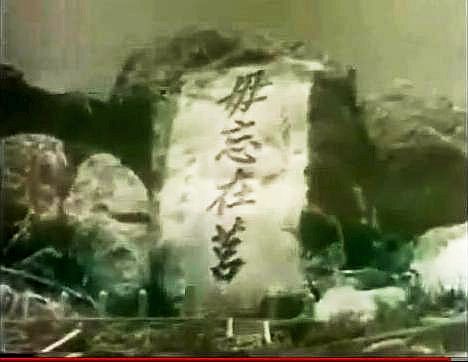
In Commemoration of China's Fall under the Alien Conquests in AD 1279,
AD 1644 & AD 1949
China was time and again invaded and raped by the "aliens" - whom this webmaster considered to be
i) the Mongols,
ii) the Manchus, and
iii) the Soviet proxies, consecutively.
For the future sons of China to read the following poem, see whether someone of you would revive the spirits of China,
and some day do some thing to reverse the fate of China, i.e., one billion coolies and slaves toiling to death for the multinational corporations and banksters under the supervision of the 'housekeeper' - the Chinese Communists or the former Soviet proxies.
(The Japanese invasion [AD 1931-1945], similar to the Jurchen invasion prior to the Mongol conquest, did not doom China as a whole as the Mongol conquest and the Soviet-ChiCom conquest subsequently did.)
The communists had conquered China owning to the key battle success in Manchuria, which was the result of treacheries on the part of Wei Lihuang, i.e., the government troops' commander-in-chief in Manchuria, a treachery that was comparable to Soong Dynasty prime minister Jia Sidao's abandoning to the Mongol the Xiangyang city [which was under siege for 4-5 years] and Ming Dynasty general Wu Sangui's betrayal of the Mountain and Sea Pass to the Manchus.
Wei Lihuang, with the communist mole by his side from the days of the resistance war, overrode General Wang Tiehan's proposal and made the government army into the sitting ducks in the isolated pockets and cities of Manchuria, for the communist army to attack.
Namely, Wei Lihuang allowed the communist army to take the transcendental secret manoeuvre to ship thousands of artillery to the foot of the Jinzhou city wall under the assistance of the Soviet railway army corps.
General Wang Tiehan suggested that the Changchun garrison troops could break out towards Mukden to the south as intelligence had shown that the communist army had disappeared along the trunk line of Changchun-Jirin-Mukden.
Only the 52nd Corps, that was hoodwinked by Wei Lihuang into attacking towards Shenyang [i.e., Mukden] as the relief troops but impeded by the communist army halfway for lack of coordination between Wei Lihuang and the communist army, managed to return to wrestle back the Yingkou port to escape the Manchurian battleground via sea.
A part of the Youth Army division, which broke out of the Mukden siege, fought its way along the Liao-xi Corridor to arrive at the Mountain and Sea Pass.
We don't need to remind the readers that the communist army was a motley group of mercenaries including about 250,000 ethnic-Korean Japanese Kwantung Army diehards per Kim Il-sun plus the Japanese 8th Route Army (i.e., the Japanese medical staff, airforce staff, officer corps, and tank and artillery operators), the ethnic-Taiwan Japanese Kwantung Army, the Outer Mongolian cavalry army, not counting the Soviet railway army corps.
According to the Soviets, the 'railway' tag was a guise for intervening in the Chinese civil wars, namely, the cloak of secrecy under which the Soviets orchestrated the historical Soviet conquest of China to fulfill Stalin's mantle that pro-Soviet regimes must be established in all territories that the Soviet Red Army ever stepped on, no matter Europe or Asia.
That is, Soviet military staff, not merely Soviet military advisers, fought the Chinese civil wars in Manchuria as the railway staff.
Ivan V. Kovalev, as Stalin and All-Union Communist Party (Bolsheviks)'s plenipotentiary to the Chinese Communist Party (CCP), was sent to China for directing the civil war as a railway czar.

George Kennan's Fallacious Disclaim of Soviet Instigation and Bankrupt 'Long' Containment View:
George Kennan
naively discounted
the Chinese communist revolution as "part of the Soviet system" and asserted its victory to be an
exception to the Soviet "military intimidation or invasion" and not a result that could be ascribed
"primarily to Soviet propaganda or instigation" (American Diplomacy, p. 119. The U of Chi Press 1951,
expanded edition).
George Kennan's bankrupt 'long' view as to communism was "a long-term, patient but firm and vigilant containment", which was to seek solutions in the "historical"
context, namely,
the "Russian or the oriental mind" of the "Russian-Asiatic world", something the communist China twin shared, that was
seemingly perceived as an innate matter that could not be overcome.

|
|
|
|
|
TEN TRAINS EQUIVALENT AMERICAN LEND-LEASE WEAPONS THAT STALIN & RUSSIANS GAVE TO MAO & CHINESE COMMUNISTS;
FORTY SHIPS EQUIVALENT QUANTITY OF TANKS & CANNONS, BOTH AMERICAN-MADE & JAPAN-MADE
3300 TONS OF PETROL FROM RUSSIANS IN 1947 ALONE; PLUS 2000 TONS OF DIESEL, 1000 TONS OF PLANE FUEL, 700 TONS OF EXPLOSIVES & 2000 TONS OF MACHINERY OIL
30000 TONS OF PETROL FROM RUSSIANS IN 1948; PLUS 1000 TONS OF PLANE FUEL, 5000 TONS OF KEROSINE, 3000 HEAVY WEIGHT TRUCKS & 150 ARTILLERY TRACTORS
DEATH OF MILLIONS OF YELLOW MEN, & POSSIBLY MORE IN THE FUTURE WAR AGAINST TAIWAN !!!!!
Reference: see the writing by James Perloff China Betrayed Into Communism on Friday, 24 July 2009 at
http://www.thenewamerican.com/index.php/history/world/1464
August Storm lend-lease weapons ended up in Mao's hands.
"At the Teheran and Yalta wartime conferences, however, Roosevelt asked Stalin if he would break his pact with Japan and enter the Far East war. Stalin agreed, but attached conditions. He demanded that America completely equip his Far Eastern Army for the expedition, with 3,000 tanks, 5,000 planes, plus all the other munitions, food, and fuel required for a 1,250,000-man army. Roosevelt accepted this demand, and 600 shiploads of Lend-Lease material were convoyed to the USSR for the venture. Stalin's Far Eastern Army swiftly received more than twice the supplies we gave Chiang Kai-shek during four years as our ally.
"General Douglas MacArthur protested after discovering that ships designated to supply his Pacific forces were being diverted to Russia. Major General Courtney Whitney wrote: 'One hundred of his transport ships were to be withdrawn immediately, to be used to carry munitions and supplies across the North Pacific to the Soviet forces in Vladivostok.... Later, of course, they were the basis of Soviet military support of North Korea and Red China.'
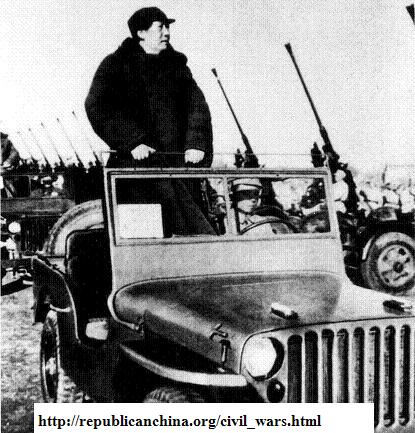
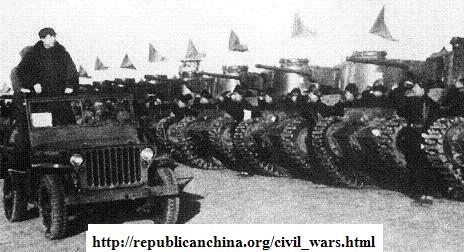
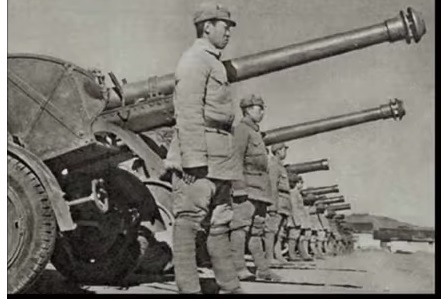
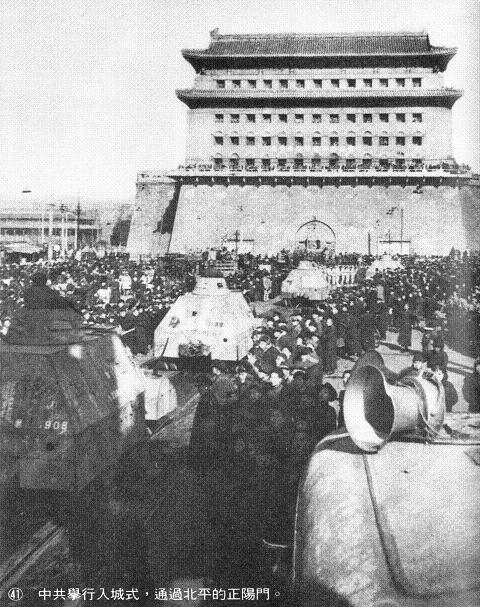
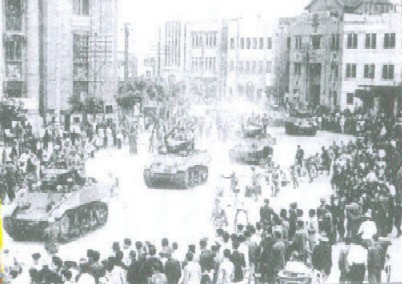
|
* In Commemoration of China's Fall under the Alien Conquests in AD 1279,
AD 1644 & AD 1949 *
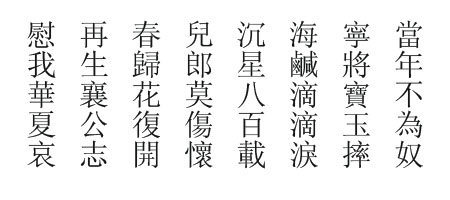
At the time [when China fell under the alien rule], refusing to be slaves,
[our ancestors] died as broken jades rather than being alive as an intact tile.
Tears, which tasted like the sea water, dripping down [the face] one by one,
For [China] the star [that fell from the sky] had been down [at the bottom of the sea] for 800 years.
Sons, please do not get saddened in the hearts,
For as the flowers did, they blossom when the spring returns.
When the [hegemony lord] Xianggong's swear is to be revived again,
The sorrow of the Flowery Xia Chinese would be soothed.
|
|
This snippet is for sons and daughters of China:
Heed the sons & ministers' agony and sorrow of our ancestors who died or lived through the Mongol, Manchu and Soviet-Chicom conquest
and
the Yongjia, Jingkang and Jiashen cataclysms !
Jeanne d'Arc of China:
Xun Guan breaking out of the Wancheng city to borrow a relief army in the late Western Jinn dynasty;
Liu-Shao-shi riding into the barbarian army to rescue her husband in the late Western Jinn dynasty;
Shen Yunying breaking into Zhang Xianzhong's rebels on the horseback to avenge on father's death in the late Ming dynasty;
China's Solitary and Lone Heroes:
Nan Jiyun breaking out of the Suiyang siege and charging back into the city in the Tang dynasty;
Zhang Gui & Zhang Shun Brothers breaking through the Mongol siege of Xiangyang in the Southern Soong dynasty;
Liu Tiejun breaking through three communist field armies' siege of Kaifeng in the Republican China time period
;
Zhang Jian's lone confrontation against the communist army during the June 3rd & 4th Massacre of 1989.
|
|
The Invasion of Japan
After pacifying Korea, the Mongols contemplated on the invasion of Japan which was ruled by the Kamakura bakufu (shogunate, A.D. 1185-1333).
Before subjugating Southern Soong, Kubilai sent a fleet of 150 boats against Japan in A.D. 1274, i.e., what Japan called by the Wenyong (Bunei) Invasion that happened during the Wenyong (tenno Gouda's Bunei 11th year in Japanese) Era.
The idea to have contact with Japan started in A.D. 1265 when a Koryo emissary, Zhao Yi, told Khubilai that Japan could be reached.
Back in A.D. 1265, Korean Zhao Yi suggested to the Mongols to send a delegation to Japan.
The second year, Khubilai sent He De and Yin Hong to Japan via Koryo where the Koryo king ordered his people to accompany them on the sea trip.
The A.D. 1266 letter claimed that the Mongols had taken over 'qu-Xia', i.e., Sinitic China.
Marco Polo supposedly had travelled to and stayed in China during the period of A.D. 1275 - 1292. (Some Chinese scholars double-checked Marco's records with the official Mongol history and validated the authenticity of Marco Polo's accounts.) Two years after the 1279 conquest of Southern Soong, Kubilai's empress, an Onggirat woman, passed away. The Mongol khans had a custom of marrying the Onggirat women, a convention passed down from Genghis Khan. A niece of the empress would become the new empress. But Khubilai, though getting older, chose to go to the capital of Shang-du (i.e., Kaiping) for sake of indulging himself in concubines there (i.e., concubines from the past emperors). Kubilai hired a Muslim as his finance minister, and this person, A-he-ma, had done his best to exploit the people in the iron and salt trades. The A-he-ma nepotism would include over 500 officials across the country. A-he-ma would later be killed by a 'qian hu' (1000 household official) who issued an order in the name of the crown prince. Khubilai then renovated politics a bit by ordering Guo Shoujing to recompile the calendar, promoting the overseas trading, and inviting Confucius' descendant as the academy official. Rebellions broke out in coastal China of today's Fujian and Guangdong.
In A.D. 1268, Koryo was asked by Khubilai to send a delegation to Japan again.
Khubilai then sent Pan Hu to Japan where Pan Hu stayed for 6 months; but Pan did not get to see any Japanese official.
The Mongol letter for tenno Go-saga was relayed.
Korean Pan Fu delivered the Mongol letter to Shoni Sigeyoshi who was from the Muto family.
The shogunate, with the Southern Soong monks' relaying news of the Mongol barbarity on the mainland, declined to receive the Korean emissary.
In mid-1268, Khubilai ordered Koryo to construct 1000 ships for campaigning against Japan.
The Mongols in A.D. 1269 landed on Tsushima again.
However, Hojo Tokimune (r. 1268-1284), Japanese shikken, i.e., shogun (general) Koreyasu Shinno's regent, declined the Mongol delegation and ordered reinforcing defense of the Kyushu Island.
The Mongols sent more delegations to Japan in vain, one more time in A.D. 1269, one time in A.D. 1271, and one time in A.D. 1272.
In A.D. 1274, Zhao Liangbi (Zhuyaojia Liangbi), who was sent by Khubilai to Koryo for military farming in A.D. 1270, went to Japan to deliver Khubilai's letter as 'mishu jian' (supervisory secretary).
Zhao Liangbi met a Japanese governor who claimed that the Japanese refused to meet the prior Mongol emissaries because the Koreans had repeatedly said that the Mongols intended to invade Japan.
In A.D. 1274, the Koryo king (Wang Zhi/Wang Sik, r. 1260-1274) passed away. Khubilai married over his daughter to the new Koryo king(Wang Chun, r. 1274-1308) and then ordered that Koryo send an auxiliary force of 5,000 on a campaign against Japan. Khubilai altogether assembled 900 ships and an army of 20,000 to 30,000 for invading Japan, that consisted of 15,000 Mongol and Jurchen troops, 5600 Koryo troops, and 6700 Koryo sailors.
The Mongol fleet suffered a hurricane attack, with numerous ships sunken and a loss of over 13,000 troops.
After the Mongols withdrew, the Japanese constructed a 20-kilometer line of stone ramparts along the Kyushu shoreline to prevent the Mongol ships from docking again.
In A.D. 1275, Khubilai sent protocol sub-minister Du Shichong,
army sub-minister Heh Wenze,
'shu-zhuang guan' Gao
and
'ji-yi guan' Sadu-luding to Japan.
The Japanese again refused to receive the delegation.
The delegation, with Koryo interpreter Xu Zan and Koryo sailors in the accompaniment, detoured around provincial capital Dazaifu to have arrived at Murotsu of the Nagatonokuni 'ryoseikoku' state (province).
The entourage was detained and sent back to Dazaifu where they were ordered to be executed by Hoji Tokimune, except for the Koryo sailors.
The Japanese shogunate minister killed Du Shichong, et al., after being enraged by the letter from Khubilai.
The news of death of the emissaries did not spread to the Mongol court till A.D. 1279 when some sailors fled to Koryo.
Owing to rumors about the Soong Dynasty's revival, Khubilai relocated former Soong Emperor Gongdi (now Duke Yingguo-gong) to Shang-du and ordered ex-Soong prime minister Wen Tianxiang be executed should he refuse to surrender. Wen Tianxiang wrote a poem, stating that "Confucius proposed that one should die for compassion (Ren) and Mencius suggested that one should die for righteousness (Yi). Only when righteousness is fully exhausted will the compassion be derived. What should I endeavour after educating myself with so many books of the ancient saints? However, I am sure that I feel no guilty about myself from this death moment on." (Confucius wording for 'Ren' should mean a broader sense of human perfection, similar to nirvana in Buddhism. 'Ren' also meant nucleus in Chinese, as used for the nucleus of various fruits like apple.) Khubilai, impressed by this poem, conferred a title of Duke Lulingjun-gong on Wen Tianxiang posthumously.
After the Mongols destroyed Southern Soong in A.D. 1279, Khubilai contemplated upon invading Japan again.
In A.D. 1281, Kubilai sent another expedition, with more than 160,000 soldiers, to Japan, but a typhoon destroyed the fleet, with those soldiers already on the Japanese shore mostly killed by the Japanese. (The Japanese only spared the Southern Chinese and made them into slaves. Later, three Chinese fled to the continent.)
* In Commemoration of China's Fall under the Alien Conquests in A.D. 1279,
A.D. 1644 & A.D. 1949 *
 U.S.S.R./Comintern Alliance with the KMT & CCP (1923-1927)
U.S.S.R./Comintern Alliance with the KMT & CCP (1923-1927)
 Korean/Chinese Communists & the 1931 Japanese Invasion of Manchuria Korean/Chinese Communists & the 1931 Japanese Invasion of Manchuria
American Involvement in China: Soviet Operation Snow, IPR Conspiracy, Dixie Mission, Stilwell
Incident, O.S.S. Scheme, Coalition Government Crap, Amerasia Case & The China White Paper
* Stay tuned for "Republican China 1911-1955: A Complete Untold History" *
|
|
Zou Rong's Revolutionary Army;
Shin Kyu Sik's
Shrine (Spirit, Kunitama) of Korea
|
This snippet is for sons and daughters of China:
Heed the sons & ministers' agony and sorrow of our ancestors who died or lived through the Mongol, Manchu and Soviet-Chicom conquest
and
the Yongjia, Jingkang and Jiashen cataclysms !
Jeanne d'Arc of China:
Teenager girl Xun Guan breaking out of the Wancheng city to borrow the relief troops in the late Western Jinn dynasty;
Liu-Shao-shi riding into the barbarian army to rescue her husband in the late Western Jinn dynasty;
teenager girl Shen Yunying breaking into Zhang Xianzhong's rebels on the horseback to avenge on father's death in the late Ming dynasty.
China's Solitary and Lone Heroes:
Nan Jiyun breaking out of the Suiyang siege and charging back into the city in the Tang dynasty;
Zhang Gui & Zhang Shun Brothers breaking through the Mongol siege of Xiangyang in the Southern Soong dynasty;
Liu Tiejun breaking through three communist field armies' siege of Kaifeng in the Republican China time period;
Zhang Jian's lone confrontation against the communist army during the June 3rd & 4th Massacre of 1989.
|
|
|
According to Venerable Master Dongchu (1908-1977), Soong Dynasty's monks, who contributed to building the Japanese Zen Buddhism in Kamakura, worked diligently to obtain the Japanese assistance to revive the deposed Soong dynasty.
Monk Zu-yuan was said to have prayed days and nights in wishing his words to transform into the divine soldiers against the Mongol invaders.
In Dongchu's opinion, Kubilai's motivation in invading Japan was for sake of eradicating the Soong Chinese monks who were agitating in Japan for the restoration of the Soong Dynasty.
For the invasion, the Mongols organized two routes, with the eastern route army commanded by 'du yuan-shuai' and 'you cheng[-xiang]' Xin-du (Hu-dun), Hong Chaqiu and Jin Fangqing, and the Jiang-nan (south of the Yangtze) '[Nan-]Maan-jun' route army commanded by turncoat Soong generals Fan Wenhu and Li Ting.
Khubilai also sent minister A-lou-han to Koryo for supervising the campaign.
A-lou-han died en route in Koryo. Khubilai then ordered leftside prime minister An-ta-ha to substitute for the position of dead A-lou-han.
The Mongol ships, unable to dock on the Kyushu shoreline, stayed at the Hakata Bay for one month through June-July.
The Mongol army met strong resistance from the Japanese.
Takezaki Suenaga, who fought the A.D. 1274 Hakata Battle under Muto Kagesuke, repelled the Mongol navy at the Battle of Mikuriya Sea through nightly raids.
Meanwhile, 'you cheng[-xiang]' Fan Wenhu and 'can-zheng' and 'zuo cheng[-xiang]' Li Ting procrastinated on the war after arriving in Japan though seven days and nights' sea trip, and then started the war on own initiative.
Before arriving at an outer island near the Japanese coast by July, 30-40% of the ships, under the command of 'wan hu' (ten thousand household official) Li Debiao, had already fled towards Koryo as a result of huge sea winds (called the "divine wind" or kamikaze in Japanese). When the hurricane blew again, Fan Wenhu also fled to Koryo on August 1st. A lower level official, 'bai hu' (officer in charge of 100 households), would be in charge of the remaining Mongol army, about 100,000 people. When this 'bai hu' ordered that the Mongols landed on the island to cut trees for repairing the ships, the Japanese made an assault on them. One third of the Mongols were killed, one third drowned in the seas, and one third taken prisoners. Out of the 20-30,000 prisoners, only 10,000 Southern Chinese were spared. One Southern Chinese, by the name of Yu Chang, fled home to report the defeat. Two more Chinese, Muo Qing and Wu Wanwu, fled to the continent, too. Fan Wenhu later blamed the defeat on 'wan hu' (officer in charge of 10,000 soldiers) Li Debiao, but Khubilai could not locate Li Debiao since Li had dispersed his soldiers and hid himself in Koryo as a civilian. Then, Khubilai ordered a new campaign against Japan, and this was only halted when he shifted his priority to the campaign against Champa.
According to Venerable Master Dongchu (1908-1977), Kubilai, after two failures in invading Japan in A.D. 1274 (i.e., the Battle of Wenshui) and 1281 (i.e., the Battle of Hong'an), changed strategy to pacify Japan by utilizing the Buddhists.
Among monks sent to Japan would be Yi-shan-yi-ning from Mt Putuoshan of today's Zhenhai, who arrived in the Hakata Bay in A.D. 1299, with Yuan Emperor Chengzu's letter.
Yi-shan-yi-ning, who was put under arrest at one time as a spy by the Shogunate headed by Hojo Sadatoki, was allowed to preach Buddhism and was accorded meetings with the Shogun. Eighteen years later, Yi-shan-yi-ning passed away in Japan, with the Japanese eulogizing him as the most excellent person from the Soong land and the Japan nation's state tutor.
Throughout the history of 92 years' rule over China, Japan never acknowledged the Mongols as an orthodox dynasty of China.
|
|
|
|
|
|
|
Sovereigns & Thearchs;
Xia-Shang-Zhou dynasties;
Zhou dynasty's vassalage lords;
Lu Principality lords;
Han dynasty's reign years
(Sexagenary year conversion table-2698B.C.-A.D.2018; 247B.C.-A.D.85)
|
|
The Sinitic Civilization - Book I is
available now at
iUniverse,
Barnes & Noble,
Amazon,
Google Play|Books
and
Nook.
The Sinitic Civilization - Book II is available at
iUniverse,
Amazon and Barnes & Noble.
Check out the 2nd edition preface that had an overview of the epact adjustment of the quarter remainder calendars of the Qin and Han dynasties, and the 3rd edition introductory that had an overview of Sinitic China's divinatory history of 8000 years.
The 2nd edition, which realigned the Han dynasty's reign years strictly observing the Zhuanxu-li calendar of October of a prior lunar year to September of the following lunar year, also cleared this webmaster's blind spot on the authenticity of the Qinghua University's Xi Nian bamboo slips as far as Zhou King Xiewang's 21 years of co-existence with Zhou King Pingwang was concerned, a handicap due to sticking to Wang Guowei's Gu Ben Bamboo Annals and ignoring the records in Kong Yingda's Zheng Yi.
Stayed tuned for Book III that is to cover the years of A.D. 86-1279, i.e., the Mongol conquest of China, that caused a loss of 80% of China's population and broke the Sinitic nation's spine.
Preview of annalistic histories of the Sui and Tang dynasties, the
Five Dynasties, and the two Soong dynasties
could be seen in
From the Khitans to the Jurchens & Mongols: A History of Barbarians in Triangle Wars and Quartet Conflicts
(The Barbarians' Tetralogy - Book III: available at iUniverse;
Google;
Amazon;
B&N).
(A final update of the civilization series, that is scheduled for October 2022, would put back the table of the Lu Principality ruling lords' reign years, that was inadvertently dropped from Book I during the 2nd update.)
|
|
Book II - Table of Contents:
Chapter XXXI: The Han Dynasty's Chronological History p.367
Invasion into the Korean Peninsula p.391
Chapter XXXVI: The Western Expedition, The Kunlun Mountain & Shan Hai Jing p.489
Han Emperor Wudi Seeking Elixir from the Immortals on the Kunlun Mountain p.491
Credible Geography Book on the Mountains Possibly Expanded to Include the Legendary Kunlun Mountain p.493
Unearthly Things in the Mountains' Component of The Legends of Mountains & Seas p.501
The Divination Nature and Age of the Seas' Component of The Legends of Mountains & Seas p.506
Chapter XXXVII: The Legends of Mountains & Seas (Shan Hai Jing) & The Ancient Divination p.520
The Divination Nature and Age of the Seas' Component in The Legends of Mountains & Seas - Debunking the Theory of "Asiatic Fathers of America"
Shan Hai Jing, in the "within-seas" and "great [overseas] wilderness sections, contained three interesting matters, namely, an alternative history of the thearchs that differed from the five thearchs' lineage in Shi-ji and Da-dai Li-ji; the wind gods that had the trace from the oracle bones of the Shang dynasty time period; and the divination topics such as Xia King Qi3's bestriding the flying dragons to rise to the heaven.
It could be speculated that the mythic writings in the seas' components of Shan Hai Jing were the result of the emperor's seeking the panacea or elixir. Note that dozens of diplomatic missions were sent to the west, with an apparent side order for ascertaining the locality of the legendary Kunlun Mountain where the immortals lived. If the mountain sections of Shan Hai Jing was written before Zhang Qian's trip to the west, the writer(s) of the sea sections, possibly following the "mountains" component of Shan Hai Jing (i.e., The Legends of the Mountains and Seas), expanded the writings on Kunlun, the Queen Mother (old woman), and the origin of the Yellow River, etc., into the chapters known as "The Book on the Within-Seas", "The Book on the Inner Seas", "The Book on the Outer Seas", and "The Book on the [Overseas] Wilderness" --a highly speculative book that talked about the panacea, the immortals, the various gods, as well as the ancestral human gods like Tai-hao the Senior (i.e., wind or phoenix-surnamed ancestor), Huang-di the Yellow Thearch, Yan-di the Fiery Thearch, Shao-hao the Junior (i.e., Ji3-surnamed ancestor), Overlord Zhuanxu, Overlord Di-ku, Overlord Yao, Overlord Shun, the founder-kings of the Xia, Shang and Zhou dynasties, as well as mythical figures like Lord Di-jun, et al. (Depending on the coverage of the overlords in different sections of the sea components of Shan Hai Jing, there were unfounded claims among the modern historians that those particular sections of the book were from some particular past dynasties like Xia or Shang.)
The mountain part of Shan Hai Jing, while having its geographical layout built on top of Yu Gong (Lord Yu's Tributes), was not written as a geography book but with possibly two purposes, namely, a proclivity for expounding sacrifice and primitive prophecy conducted on the mountains and hills, and a description of the treasures and wealth of the mountains. The second purpose was similar to the forgery Han dynasty political economy book Guan Zi --which, like the "Salt & Iron Debate" of the Han dynasty, contained chapters on the mountains such as 'Shan-guo Gui' (mountain nations' track, i.e., finance management), Shan Quan Shu (mountain's whimsical mathematical strategy), and Shan Zhi Shu (mountain's utmost mathematical strategy), containing similar description of the treasures and wealth of the mountains. The writings sharing the common geographical data or similar raw materials with the mountain part of Shan Hai Jing included Qu Yuan's poems like Tian Wen (asking heaven); Mu-tian-zi Zhuan (Zhou King Muwang's travelogue); and Lv-shi Chun-qiu.
(The four eastern mountain ranges were mistakenly appropriated to North America by Henriette Mertz in the 1958 book Pale Ink, which was the author's overzealous pursuit of the topic of Asiatic fathers of the Amerindians. Henriette Mertz also had the wild imagination about the deep gully beyond the east sea, stating that it was the Grand Canyon of Arizona. Henriette Mertz, who had erroneously appropriated the mountains and valleys in Shan Hai Jing to North America, had some validity as to the link of monk Hui-shen to Quetzalcoatl.)
In contrast, the seas or overseas' components of Shan Hai Jing transcribed the unearthly animals, human-faced animal gods and strange-looking people in the mountain part of Shan Hai Jing into the names of countries or tribes as seen in Lv-shi Chun-qiu and Han dynasty book Huai Nan Zi, exhibiting the seas or overseas' components to be later than the mountain part. The seas or overseas' components could be further separated into two groups, namely, the "inner seas" and the "outer seas" sections that were compiled by Liu Xin of the Han dynasty and the "within-seas" and the "overseas wilderness" sections that were collected by Guo Pu of the Jinn dynasty, with the former two sections possibly synchronizing with the Han empire's military expansion, and the latter two sections sharing similar contents seen in the divinatory books Lian-shan Yi and Gui-cang Yi, including the Wangjiatai excavated divination texts of the 3rd century B.C. and possible materials from the Ji-zhong tomb excavation materials that were possibly a few decades earlier than the Wangjiatai texts.
Gui-cang Yi, like what the seas' component of Shan Hai Jing did in extensively copycatting Qu Yuan's and the other Chu Principality poems, had taken some of the poems' concepts as part of the divination texts, such as the "Feng-xue" (wind cave) in poem Bei Hui-feng [feeling sad about the percolating wind], and the "Yun-zhong[-jun]" (god in the cloud) and "Dong-jun" (eastern god) deities in poem Jiu Ge (nine songs), for example. While the divination in the seas or overseas' components of Shan Hai Jing could be relatively old, like the age of the Ji-zhong tomb and Wangjiatai excavation texts, the materials had apparently undergone revision through the Zhou, Qin, Han and Jinn dynasties, for about half millennium's time, as seen in Guo Pu's citation of eight polars in Qi3-shi1 of Gui-cang Yi to describe Xi-he2's reign in the empty mulberry land under the 'cang-cang' blue sky, as well as in the erroneous interpretation of Xia King Qi3's rising to the sky to be a high lord's guest as some theft of heavenly music, not an award from the high lord.
Simply speaking, the seas or overseas' components of Shan Hai Jing, though carrying the names of countries like in today's Korea, Chinese Turkestan and India, etc., were not about geography at all but divination. The divination materials, similar to those in Shi1 Fa, Gui-cang Yi, the Wangjiatai divination script, and the divination in Mu-tian-zi Zhuan, served the same augury purpose of the late Warring States time period, albeit possessing their separate freelance or freewheeling traits.
For example,
The one eyed son of Lord Shaohao in the "great northern wilderness" (Da Huang Bei Jing) section of Shan Hai Jing, like the one-hand and one-eye 'shen-mu-guo' (the deep eye socket) state in the "Northern Outer Seas" section, which was speculated to be the legendary one-eyed state Arimaspi that was described by Herodotus in Histories as located north of Scythia and east of Issedones and linked to the three-eye stone statutes of the Okunev Culture in Minusinsk, could have its source in some one-eye bird in the northern mountain range of Shan Hai Jing, and the one-eye and three-tail 'huan' foxlike animal on Mt. Yiwang-zhi-shan in the western mountain range.
Some conclusive statement could be made about the alternative divination methods other than Zhou Yi (i.e., Yi-jing). No matter Gui-cang Yi, Shi1 Fa, the Wangjiatai divination script, Mu-tian-zi Zhuan, or the mountain part and seas' part of Shan Hai Jing, they served the same augury purpose of the late Warring States time period, that possessed their separate freelance or freewheeling traits in the land of the Wei Principality in the case of the Ji-zhong tomb's type of Gui-cang Yi divination or in the land of the Chu Principality in the case of Shi1 Fa and Wangjiatai divination bamboo slips. The line augury objects in Shi1 Fa under the stalk numbers "eight", "five" and "four", with similarity to the augury topics in Zhou Yi and Gui-cang Yi's four trigram images or diagrams, could be said to be like what was seen as the primitive prophecy in the mountain part of Shan Hai Jing. Roughly, Shi1 Fa matched the primitive prophecy in the mountain part of Shan Hai Jing, while Gui-cang Yi, namely, the Wangjiatai scripts or the Ji-zhong tomb's type of Gui-cang Yi divination, matched the seas' part of Shan Hai Jing as far as divination was concerned.
For details, refer to
THE SINITIC CIVILATION Book II, available on Amazon,
B&N.





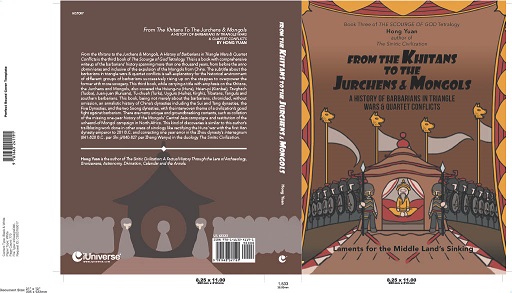
Epigraph|Preface|Introduction|T.O.C.|Afterword|Bibliography|References|Index
(available at iUniverse|Google|Amazon|B&N)
|
|
 The Scourges-of-God Tetralogy
would be divided into four volumes covering
Hsiung-nu (Huns), Hsien-pi (Xianbei), Tavghach
(Tuoba), Juan-juan (Ruruans), Avars, Tu-chueh (Turks), Uygurs (Huihe), Khitans, Kirghiz, Tibetans, Tanguts, Jurchens, Mongols and Manchus and
southern barbarians.
Book I of the tetralogy would extract the contents on the Huns from
The Sinitic Civilization-Book II,
which rectified the Han dynasty founder-emperor's war with the Huns on mount Baideng-shan to A.D. 201 in observance of the Qin-Han dynasties' Zhuanxu-li calendar.
Book II of the Tetralogy would cover the Turks and Uygurs.
And
Book IV would be about the Manchu conquest of China.
The Scourges-of-God Tetralogy
would be divided into four volumes covering
Hsiung-nu (Huns), Hsien-pi (Xianbei), Tavghach
(Tuoba), Juan-juan (Ruruans), Avars, Tu-chueh (Turks), Uygurs (Huihe), Khitans, Kirghiz, Tibetans, Tanguts, Jurchens, Mongols and Manchus and
southern barbarians.
Book I of the tetralogy would extract the contents on the Huns from
The Sinitic Civilization-Book II,
which rectified the Han dynasty founder-emperor's war with the Huns on mount Baideng-shan to A.D. 201 in observance of the Qin-Han dynasties' Zhuanxu-li calendar.
Book II of the Tetralogy would cover the Turks and Uygurs.
And
Book IV would be about the Manchu conquest of China.
From the Khitans to the Jurchens & Mongols: A History of Barbarians in Triangle Wars and Quartet Conflicts
, i.e., Book III of
the Scourge-of-God-Tetralogy,
focused on the Khitans, Jurchens and Mongols, as well as provided the annalistic history on the Sui and Tang dynasties, the
Five Dynasties & Ten Kingdoms, and the two Soong dynasties.
Similar to this webmaster' trailblazing work in rectifying the Han dynasty founder-emperor's war with the Huns to 201 B.C. in The Sinitic Civilization - Book II,
this Book III of the Scourge-of-God-Tetralogy
collated
the missing one-year history of the Mongols' Central Asia campaigns and restituted the
unheard-of Mongol campaign in North Africa.
|
The Scourges of God: A Debunked History of the Barbarians" - available at iUniverse|Google|Amazon|B&N
From the Khitans to the Jurchens & Mongols: A History of Barbarians in Triangle Wars and Quartet Conflicts
(The Barbarians' Tetralogy - Book III)
Epigraph,
Preface,
Introduction,
Table of Contents,
Afterword,
Bibliography,
References,
Index
|
|
Table of Contents
(From the Khitans to the Jurchens & Mongols: A History of Barbarians in Triangle Wars and Quartet Conflicts)
Chapter XXXVIII: The Mongol Invasion of Koryo, Japan, Vietnam, South &
Southeast Asia & Island States .................669
The Invasion of Koryo & Japan ............................................................................................669
The Invasion of Burma, Champa & Annam ............................................................................675
|
|
Champa & Annam
Champa, located to the south of Annam, refused to acknowledge being a vassal of the Mongols. The Mongols, under Suodu, departed Canton with over thousand ships. Champa boasted an army of 200,000. After being defeated by the Mongols, the Champa prince fled to the mountains and sent a minister to the Mongol camp for surrender. Unguarded, Suodu was later defeated by a Champa ambush. Suodu requested for a relief army. Khubilai ordered that his ninth son, Duohuan, i.e., King of Zhennan (i.e., quelling the south), lead an army southward via Annam. The Annam King agreed to supply grains, but refused to lend the path to the Mongols. A brother of the Annam King, Chen Jun, took charge of fighting the Mongols. Annam King sent over one thousand ships to aid his brother. After several rounds of fighting, Annam King requested again that Mongols leave Annam per the treaty signed with Mengke Khan before. The Mongols attacked the Annam camp and took over the capital. Annam King fled, and one brother by the name of Chen Yiji surrendered. The Mongols met with shortage of grain and pestilence in the Annam capital and hence called off the campaign. When fleeing northward, the Annam army attacked them with poisonous arrows at a river crossing. Duohuan barely escaped alive. Suodu, not knowing the retreat of Tuohuan, was ambushed at another river crossing. Suodu committed suicide by jumping into the river. Having incurred heavy losses, Khubilai was advised not to attack Annam for now. In A.D. 1284, Khubilai conferred the Annam kingship onto Chen Yiji and ordered King of Zhennan Tuohuan to lead a campaign against Annam. The Mongols took over the Annam capital again, and Annam king fled to the island. By the spring of A.D. 1288, pestilence erupted again. When the Mongols retreated, Annam King assembled a land/sea army of 300,000 and circumvented to the hind of the Mongols. Tuohuan barely escaped alive, and he was reprimanded by Khubilai with a prohibition to return to Peking. The Annam king, Tran Nhon-ton (Chen Ri-xuan), however, sent over a gold statute and requested for pardon. Khubilai hence sufficed with the status of Annam. Burma, however, was invaded by another Mongol king. About 12 tribes of so-called 'Xi-nan Man' or the Southwestern barbarians were conquered, and Burma acknowledged vassalage. Thailand, India, Southeast Asian statelets, hearing of the Mongol conquest of Burma, sent in tributes. Khubilai intended to invade Japan and Annam again. One minister, Lu Shirong, who raised money via over-circulation of the paper currency, was executed. Crown Prince Zhenjin passed away.
The Mongol Internal Strife
Khubilai Khan obtained his throne without a proper assembly, and hence he had lost the kind of mandate over ruling the other Mongol khanates. By moving the capital to Peking from Karakorum (rebuilt by Ogedei in A.D. 1235), he had changed the old Mongol yasaq. In the very beginning, Jochi's son, Batu, ruled the region to the north and west of Lake Balkash (extending from today's Hungary to the Kirghiz Plains, and from the lower Danube to the Caucasus); Chagadai was given the southwestern region to the east of River Amu-darya and to the southeast of River Syr-Darya, including today's Afghanistan, Turkestan, the former Naiman territories around the Altai, and central Siberia; Ogedei was awarded China and East Asia; Tului, the youngest of the four sons, was to have central Mongolia. Later, Tului's sons exterminated the ruling of Ogedei's descendants and diminished the domain of Ogedei's descendants, and the Chagadai domain was curtailed; Hulegu was given the territories beyond the Oxus River and the Hindu Kush. Nominally, Khubilai Khan was in charge of all khanates: 'Amu-darya Xingsheng' was in charge of the Ilkhanate and Kipchak Khanate; 'Lingbei (north ridge) Xingsheng' was in charge of the Ogedei Khanate [Tacheng]; and two 'yuan shuai (marshal)' offices were in charge of the Chagadai Khanate [Ili]. A separate 'Liaoyang Xingsheng' was in charge of today's Manchuria. After declaring his dynasty of Yuan,
Khubilai Khan could only be considered a ruler of China and Mongolia.
Khubilai Seeking For Confucians
Invading Java, Declaring Amnesty, and Khubilai's Death
Emperor Chengzong (Borjigin Temur, reign A.D. 1294-1307)
Invading Java, Declaring Amnesty, and Khubilai Death
Khubilai replaced a prime minister (Sangge) when he found out about the corruption. Khubilai quelled numerous rebellions in southern Chinese provinces.
In January of A.D. 1293, Kubilai sent an army of 30,000 to Java and defeated the local ruler, only to be driven off by a Javanese ally. Khubilai thought about invading Annam again in A.D. 1293 because the new Annam king had bullied Mongol emissary in A.D. 1291 and refused to come to Yuan court to pay respect. When a meteorite was spotted in the sky, Khubilai inquired with his minister (Buwusu) about how to revert the Heaven's omen as to his possible death. Buwusu cited Han Emperor Wendi's seeking repentance when 29 mountain quakes occurred in the same day and sun eclipse occurred in the year. Khubilai recited Wendi's "Decree In Regards To Sun Eclipse", opened royal grain barns for aiding hunger-stricken people, and declared a general amnesty. When Khubilai fell ill again, Prime Minister Bayan was recalled to the capital from Datong. On February 18, 1294, Kubilai died at the age of eighty, after a reign of 35 years. Khubilai was given the posthumous title of Emperor Shizu.
Emperor Chengzong (Borjigin Temur, reign A.D. 1294-1307)
With the help of Bayan, Khubilai's grandson, Temur, was proclaimed the successor, i.e., Emperor Chengzong, after the Mongol court went through a power vacuum for a few months. Temur gave his father (Zhenjin) the posthumous title of Emperor Yuzong. Temur released Annam emissary to show his goodwill. Temur conferred the title of 'tai shi' on Yuexi-temur, 'tai fu' on Bayan, and 'tai bao' on Yue-chi-cha-er. Bayan, who previously commanded 200,000 troops against Soong, passed away in this year at the age of 59. In A.D. 1296, rebellion erupted in Jiangxi Prov.
The next year, Buddhist monastery on Wutaishan Mountain was completed at a cost of over 10,000 human lives. Phagsba's disciple was responsible for pushing this project. (At the times of Khubilai, around A.D. 1271, Phagsba was made imperial tutor, and Tibetan Buddhism was made the national religion.
Phagsba's department, zong zhi yuan, in charge of religion and Tibet, was upgraded to xuan zheng yuan, the same level as the three Mongol branches of shu mi yuan, zhong shu sheng and yu shi tai. Phagsba's brother, Qia-na-duo-ji, was conferred the title of King of Bailan in charge of Tibetan area. (Bailan was the name of an ancient Qiangic tribe.)
Phagsba was responsible for devising the new Mongol script, with 41 letters. Phagsba was conferred the title of 'Da Bao Fa Wang', i.e., grand treasure king for enforcing laws.)
After the completion of Wutaishan Monastery, Empress Onggirat led a huge column onto the Wutaishan Mountain. A Chinese official rebuked the rampant behaviors of Buddhist monks from the West (including Tibet, Chinese Turkistan, India and Central Asia).
Successors of Chinggis - Continuing Conquests
 Now, the Scourge-of-God-Tetralogy.
Book III of
The Barbarian Tetralogy, i.e., this webmaster's barbarism series, is finally released in September of 2022 by iUniverse. This barbarism series would be divided into four volumes covering the Huns, the Xianbei, the Turks, the Uygurs, the Khitans, the Tanguts, the Jurchens, the Mongols and the Manchus.
Book I of the tetralogy would extract the contents on the Huns from
The Sinitic Civilization-Book II,
which rectified the Han dynasty founder-emperor's war with the Huns on mount Baideng-shan to A.D. 201 in observance of the Qin-Han dynasties' Zhuanxu-li calendar.
Book II of the Tetralogy would cover the Turks and Uygurs.
And
Book IV would be about the Manchu conquest of China.
Now, the Scourge-of-God-Tetralogy.
Book III of
The Barbarian Tetralogy, i.e., this webmaster's barbarism series, is finally released in September of 2022 by iUniverse. This barbarism series would be divided into four volumes covering the Huns, the Xianbei, the Turks, the Uygurs, the Khitans, the Tanguts, the Jurchens, the Mongols and the Manchus.
Book I of the tetralogy would extract the contents on the Huns from
The Sinitic Civilization-Book II,
which rectified the Han dynasty founder-emperor's war with the Huns on mount Baideng-shan to A.D. 201 in observance of the Qin-Han dynasties' Zhuanxu-li calendar.
Book II of the Tetralogy would cover the Turks and Uygurs.
And
Book IV would be about the Manchu conquest of China.
From the Khitans to the Jurchens & Mongols: A History of Barbarians in Triangle Wars and Quartet Conflicts
, i.e., Book III of
the Scourge-of-God-Tetralogy,
focused on the Khitans, Jurchens and Mongols, with the missing one-year history of the Mongols' Central Asia campaigns rectified.
This webmaster, other than the contribution to the Sinology studies in rectifying the Huns' war to 201 B.C., and realigned the missing one-year history of the Mongol Central Asia war, had one more important accomplishment, i.e., the correction of one year error in the Zhou dynasty's interregnum (841-828 B.C. per Shi-ji/840-827 per Zhang Wenyu) in
The Sinitic Civilization-Book I, a cornerstone of China's dynastic history.
|
The Scourges of God: A Debunked History of the Barbarians
From the Khitans to the Jurchens & Mongols: A History of Barbarians in Triangle Wars and Quartet Conflicts
(The Barbarians' Tetralogy - Book III)
Epigraph,
Preface,
Introduction,
Table of Contents,
Afterword,
Bibliography,
References,
Index
|
|
Emperor Chengzong (Borjigin Temur, r. A.D. 1294-1307) ......................692
Emperor Wuzong (Borjigin Qayisang, r. A.D. 1307-1311) ..........................693
Emperor Renzong (Borjigin Ayuur-balbad, r. A.D. 1311-1320) .................693
Emperor Yingzong (Borjigin Sidibala, r. A.D. 1320-1323) ...........................695
Emperor Taidingdi (Borjigin Yisun-temur, r. A.D. 1323-1328) ...........................696
Emperor Tianshundi (Borjigin Razibay, r. A.D. 1328) ........................... 696
Emperor Wenzong (Borjigin Tob-temur, r. A.D. 1328-1329, 1329-1332) .................697
Emperor Mingzong (Borjigin Kusele/Kusala, r. A.D. 1329) ............................697
Emperor Ningzong (Borjigin Rincinbal, r. A.D. 1332) ...................................698
Emperor Shundi (Borjigin Toyan-temur/Toghan-temur, r. A.D. 1333-1370) .. 698
Chapter XLI: The Red Turbans' Rebellion Against the Mongols ................701
Chapter XLII: The Ming Dynasty vs. the Mongols ....................720
The Development & Demise of the Yuan Dynasty (A.D. 1271-1368)
 The Scourges-of-God Tetralogy
would be divided into four volumes covering
Hsiung-nu (Huns), Hsien-pi (Xianbei), Tavghach
(Tuoba), Juan-juan (Ruruans), Avars, Tu-chueh (Turks), Uygurs (Huihe), Khitans, Kirghiz, Tibetans, Tanguts, Jurchens, Mongols and Manchus and
southern barbarians.
Book I of the tetralogy would extract the contents on the Huns from
The Sinitic Civilization-Book II,
which rectified the Han dynasty founder-emperor's war with the Huns on mount Baideng-shan to A.D. 201 in observance of the Qin-Han dynasties' Zhuanxu-li calendar.
Book II of the Tetralogy would cover the Turks and Uygurs.
And
Book IV would be about the Manchu conquest of China.
The Scourges-of-God Tetralogy
would be divided into four volumes covering
Hsiung-nu (Huns), Hsien-pi (Xianbei), Tavghach
(Tuoba), Juan-juan (Ruruans), Avars, Tu-chueh (Turks), Uygurs (Huihe), Khitans, Kirghiz, Tibetans, Tanguts, Jurchens, Mongols and Manchus and
southern barbarians.
Book I of the tetralogy would extract the contents on the Huns from
The Sinitic Civilization-Book II,
which rectified the Han dynasty founder-emperor's war with the Huns on mount Baideng-shan to A.D. 201 in observance of the Qin-Han dynasties' Zhuanxu-li calendar.
Book II of the Tetralogy would cover the Turks and Uygurs.
And
Book IV would be about the Manchu conquest of China.
From the Khitans to the Jurchens & Mongols: A History of Barbarians in Triangle Wars and Quartet Conflicts
, i.e., Book III of
the Scourge-of-God-Tetralogy,
focused on the Khitans, Jurchens and Mongols, as well as provided the annalistic history on the Sui and Tang dynasties, the
Five Dynasties & Ten Kingdoms, and the two Soong dynasties.
Similar to this webmaster' trailblazing work in rectifying the Han dynasty founder-emperor's war with the Huns to 201 B.C. in The Sinitic Civilization - Book II,
this Book III of the Scourge-of-God-Tetralogy
collated
the missing one-year history of the Mongols' Central Asia campaigns and restituted the
unheard-of Mongol campaign in North Africa.
|
The Scourges of God: A Debunked History of the Barbarians" - available at iUniverse|Google|Amazon|B&N
From the Khitans to the Jurchens & Mongols: A History of Barbarians in Triangle Wars and Quartet Conflicts
(The Barbarians' Tetralogy - Book III)
Epigraph,
Preface,
Introduction,
Table of Contents,
Afterword,
Bibliography,
References,
Index
|
|
Table of Contents
(From the Khitans to the Jurchens & Mongols: A History of Barbarians in Triangle Wars and Quartet Conflicts)
Chapter XLI: The Red Turbans' Rebellion Against the Mongols.........................................................701
Chapter XLII: The Ming Dynasty vs. the Mongols ............................................................................720
|
|
|
|
|
|
|
|
|
Sovereigns & Thearchs;
Xia-Shang-Zhou dynasties;
Zhou dynasty's vassalage lords;
Lu Principality lords;
Han dynasty's reign years
(Sexagenary year conversion table-2698B.C.-A.D.2018; 247B.C.-A.D.85)
|
|
The Sinitic Civilization - Book I is
available now on
iUniverse,
Barnes & Noble,
Amazon,
Google Play|Books
and
Nook.
The Sinitic Civilization - Book II is
available at
iUniverse,
Amazon and Barnes & Noble.
Check out the 2nd edition preface that realigned the Han dynasty's reign years strictly observing the Zhuanxu-li calendar of October of a prior lunar year to September of the following lunar year, and the 3rd edition introduction that had an overview of Sinitic China's divinatory history of 8000 years.
The 2nd edition preface had an overview of the epact adjustment of the quarter remainder calendars of the Qin and Han dynasties, and the 3rd edition introduction had an overview of Sinitic China's divinatory history of 8000 years.
The 2nd edition realigned the Han dynasty's reign years strictly observing the Zhuanxu-li calendar of October of a prior lunar year to September of the following lunar year.
Stayed tuned for Book III that is to cover the years of A.D. 86-1279, i.e., the Mongol conquest of China, that caused a loss of 80% of China's population and broke the Sinitic nation's spine.
Preview of annalistic histories of the Sui and Tang dynasties, the
Five Dynasties, and the two Soong dynasties
could be seen in
From the Khitans to the Jurchens & Mongols: A History of Barbarians in Triangle Wars and Quartet Conflicts
(The Barbarians' Tetralogy - Book III: available at iUniverse;
Google Play|Books;
Amazon;
B&N).
(A final update of the civilization series is scheduled for October of 2022, that would put back the table of the Lu Principality ruling lords' reign years, that was inadvertently dropped from Book I during the 2nd update.)
|
|
 Now, the Scourge-of-God-Tetralogy.
Book III of
The Barbarian Tetralogy, i.e., this webmaster's barbarism series, is released in October of 2022 by iUniverse. This barbarism series would be divided into four volumes covering the Huns, the Xianbei, the Turks, the Uygurs, the Khitans, the Tanguts, the Jurchens, the Mongols and the Manchus.
Book I of the tetralogy would extract the contents on the Huns from
The Sinitic Civilization-Book II,
which rectified the Han dynasty founder-emperor's war with the Huns on mount Baideng-shan to A.D. 201 in observance of the Qin-Han dynasties' Zhuanxu-li calendar.
Book II of the Tetralogy would cover the Turks and Uygurs.
And
Book IV would be about the Manchu conquest of China.
Now, the Scourge-of-God-Tetralogy.
Book III of
The Barbarian Tetralogy, i.e., this webmaster's barbarism series, is released in October of 2022 by iUniverse. This barbarism series would be divided into four volumes covering the Huns, the Xianbei, the Turks, the Uygurs, the Khitans, the Tanguts, the Jurchens, the Mongols and the Manchus.
Book I of the tetralogy would extract the contents on the Huns from
The Sinitic Civilization-Book II,
which rectified the Han dynasty founder-emperor's war with the Huns on mount Baideng-shan to A.D. 201 in observance of the Qin-Han dynasties' Zhuanxu-li calendar.
Book II of the Tetralogy would cover the Turks and Uygurs.
And
Book IV would be about the Manchu conquest of China.
From the Khitans to the Jurchens & Mongols: A History of Barbarians in Triangle Wars and Quartet Conflicts
, i.e., Book III of
the Scourge-of-God-Tetralogy,
focused on the Khitans, Jurchens and Mongols, with the missing one-year history of the Mongols' Central Asia campaigns rectified.
This webmaster, other than the contribution to the Sinology studies in rectifying the Huns' war to 201 B.C., and realigned the missing one-year history of the Mongol Central Asia war, had one more important accomplishment, i.e., the correction of one year error in the Zhou dynasty's interregnum (841-828 B.C. per Shi-ji/840-827 per Zhang Wenyu) in
The Sinitic Civilization-Book I, a cornerstone of China's dynastic history.
|
The Scourges of God: A Debunked History of the Barbarians (available at iUniverse|Google Play|Google Books|Amazon|B&N)
From the Khitans to the Jurchens & Mongols: A History of Barbarians in Triangle Wars and Quartet Conflicts
(The Barbarians' Tetralogy - Book III)
Epigraph,
Preface,
Introduction,
Table of Contents,
Afterword,
Bibliography,
References,
Index
|
|
Written by Ah Xiang
|
|

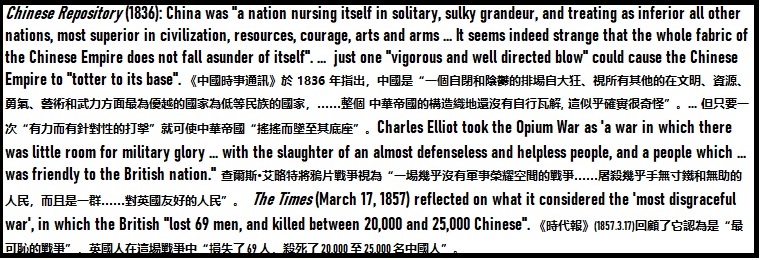
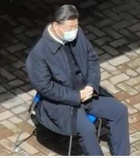








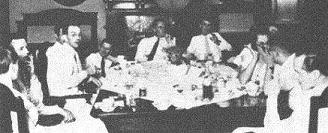
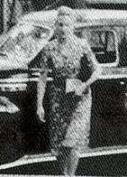
![Though, Anna Wang [Anneliese Martens], in her memoirs, expressed jealousy over Gong Peng by stating that the Anglo-American reporters had flattered the Chinese communists and the communist movement as a result of being entranced with the goldfish-eye'ed personal assistant of Zhou Enlai](GongPeng.jpg)









 The three routes of the Mongol armies then converged on the Hungarian Plains.
In early April of 1241, Batu crossed the Carpathian Mountains into Hungary. Batu sent another note to Majia (Hungary), requesting for handover of the Kipchak chieftain (Huotuosihan). Batu had earlier sent Julianus (a Dominican friar) and the Cuman prisoners to King Bela IV, but the message was ignored. A Polish messenger's letter from Batu to Bela was also ignored.
Hungary, having received about 40,000 Kipchak [Cuman] people, ordered that they convert to Catholics.
Total troops assembled by the Hungarian king numbered at 100,000.
A Catholic priesthood leader, against the order of the Hungarian king, led a Christian army for a fight with the Mongols outside of the city, but he got defeated by the Mongols in a swamp. The Hungarians and Archduke Frederick of Austria blamed the Mongol attack on the Kipchak chieftain and killed Huotuosihan [Khotyan] for sake of pacifying the Mongols. The Kipchaks or Cumans left Hungary for Bulgaria, plundering all the way.
(
The three routes of the Mongol armies then converged on the Hungarian Plains.
In early April of 1241, Batu crossed the Carpathian Mountains into Hungary. Batu sent another note to Majia (Hungary), requesting for handover of the Kipchak chieftain (Huotuosihan). Batu had earlier sent Julianus (a Dominican friar) and the Cuman prisoners to King Bela IV, but the message was ignored. A Polish messenger's letter from Batu to Bela was also ignored.
Hungary, having received about 40,000 Kipchak [Cuman] people, ordered that they convert to Catholics.
Total troops assembled by the Hungarian king numbered at 100,000.
A Catholic priesthood leader, against the order of the Hungarian king, led a Christian army for a fight with the Mongols outside of the city, but he got defeated by the Mongols in a swamp. The Hungarians and Archduke Frederick of Austria blamed the Mongol attack on the Kipchak chieftain and killed Huotuosihan [Khotyan] for sake of pacifying the Mongols. The Kipchaks or Cumans left Hungary for Bulgaria, plundering all the way.
(








